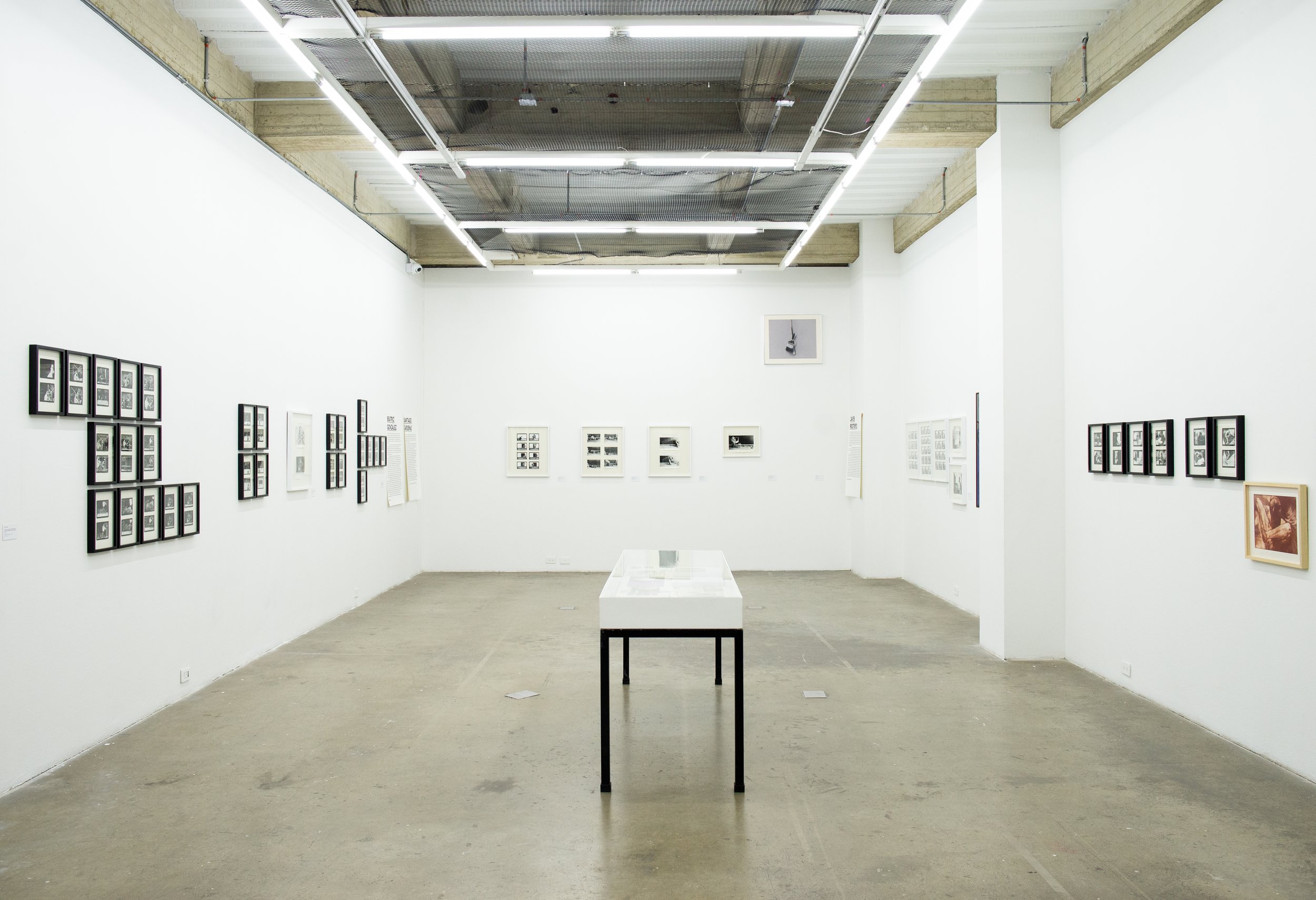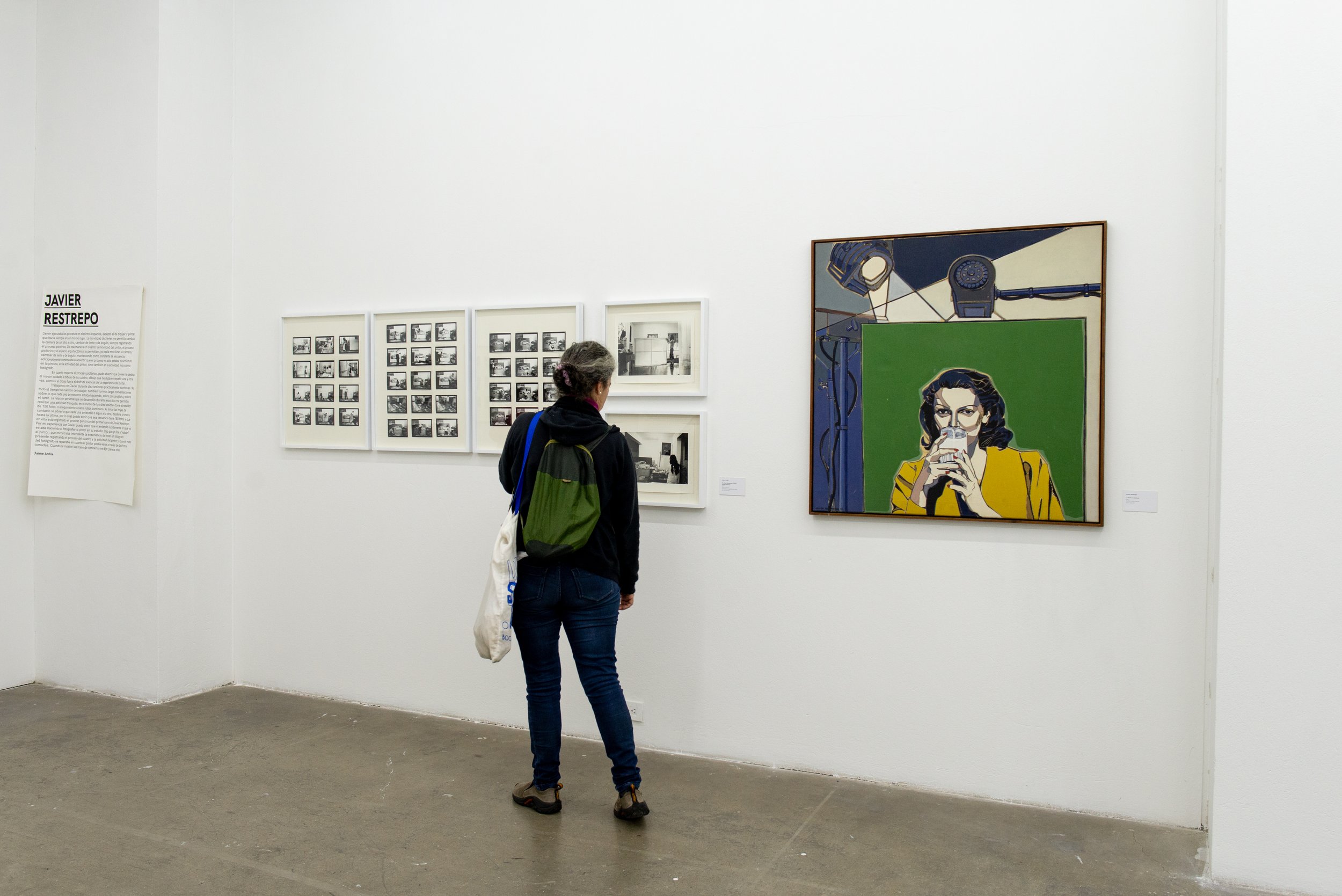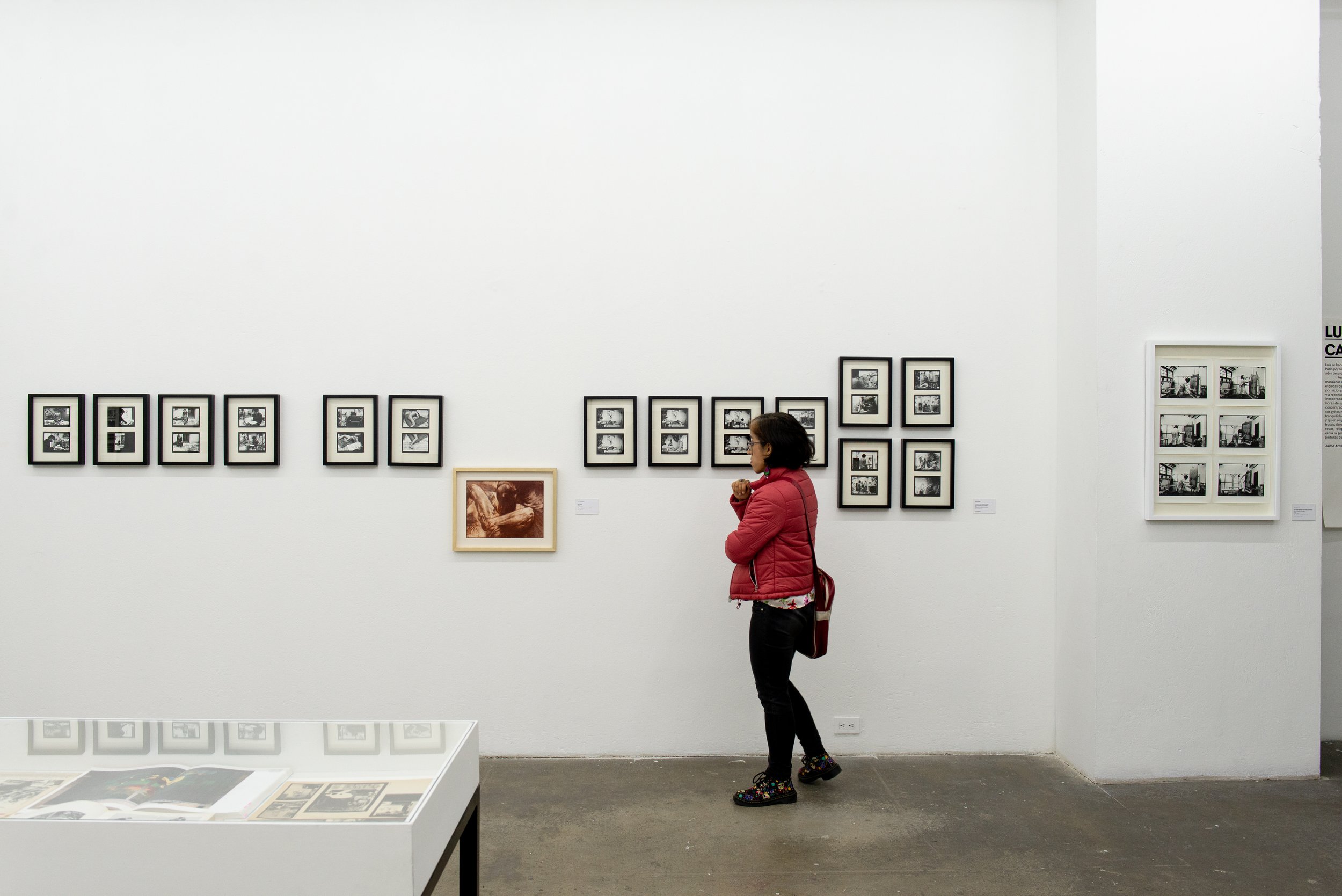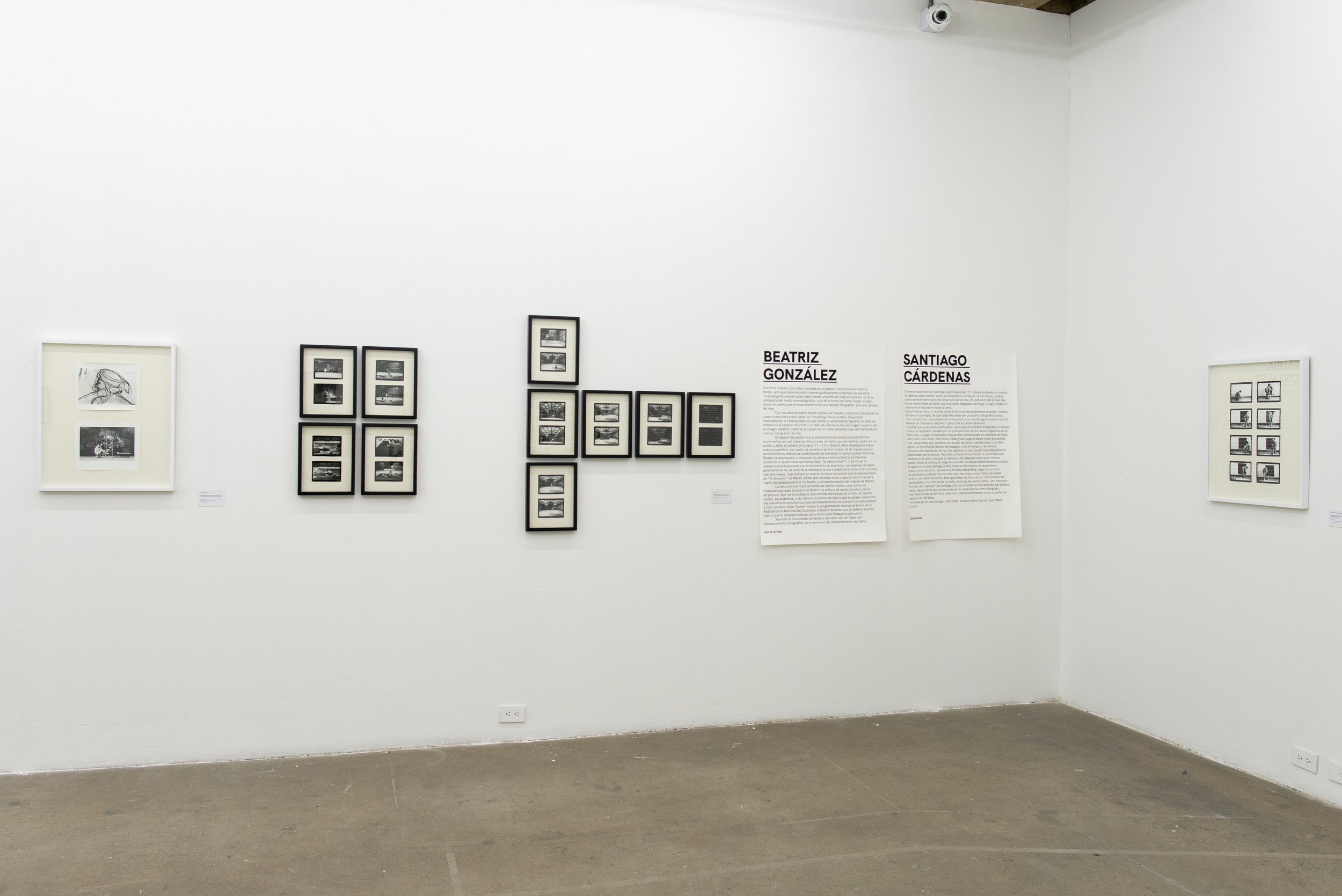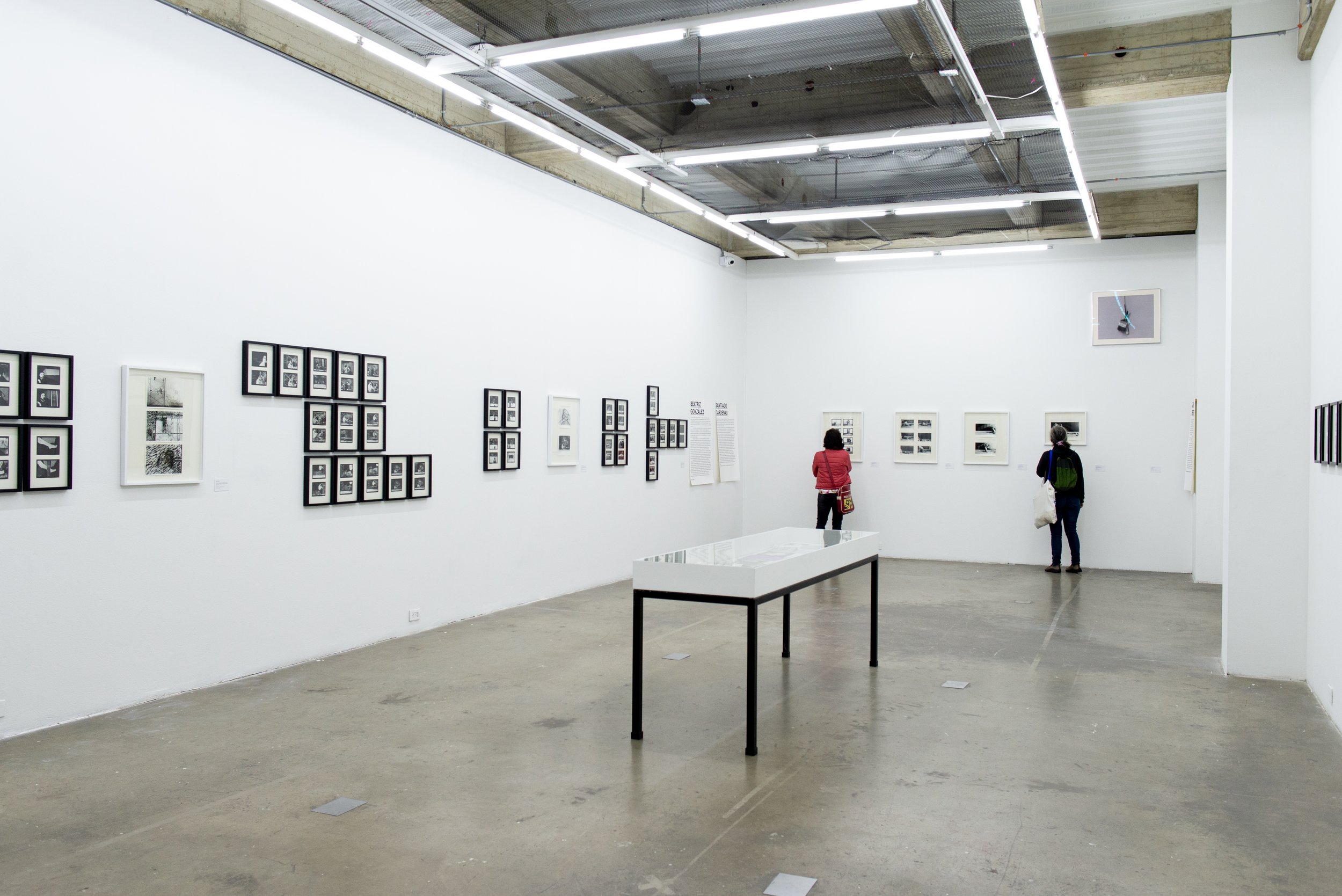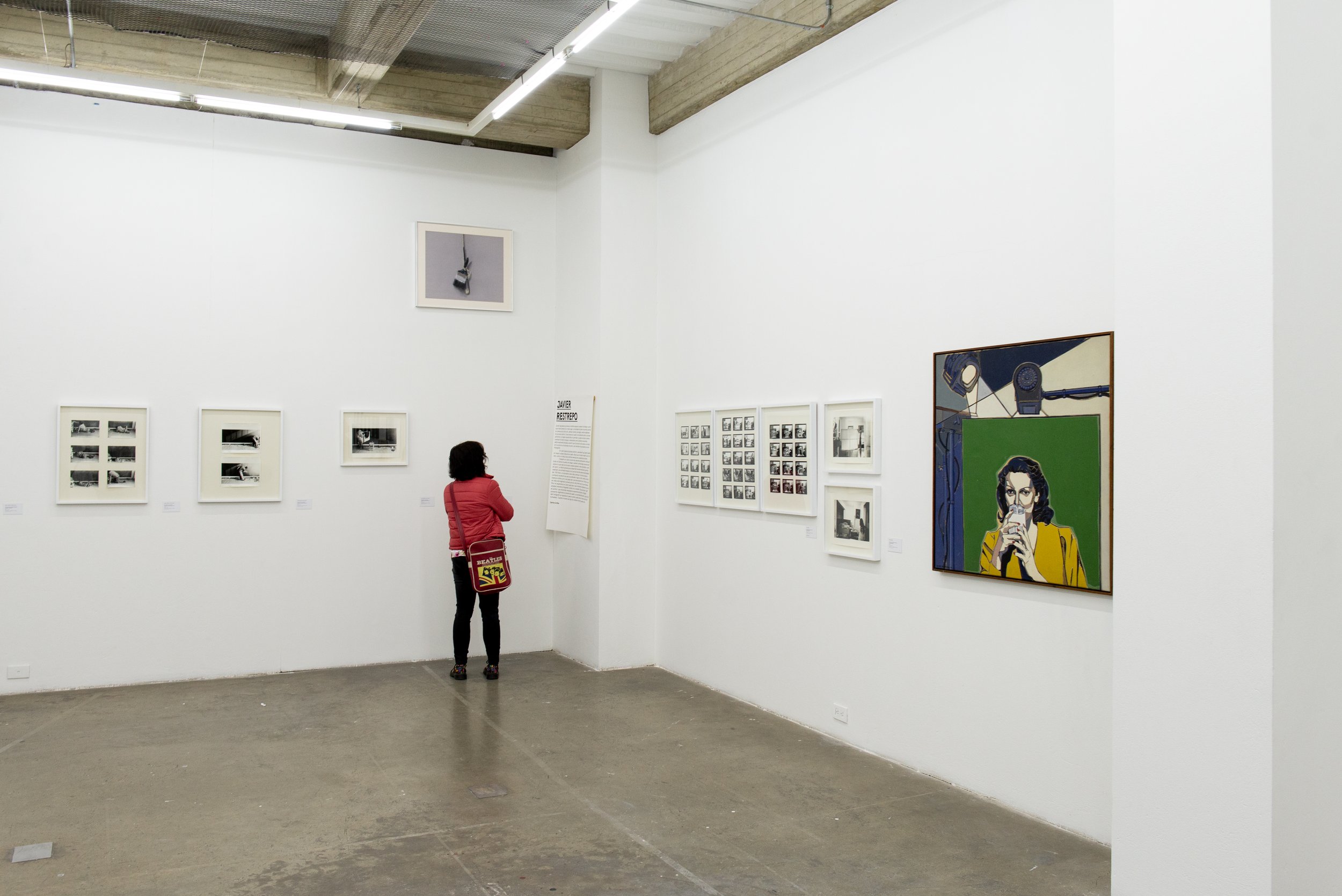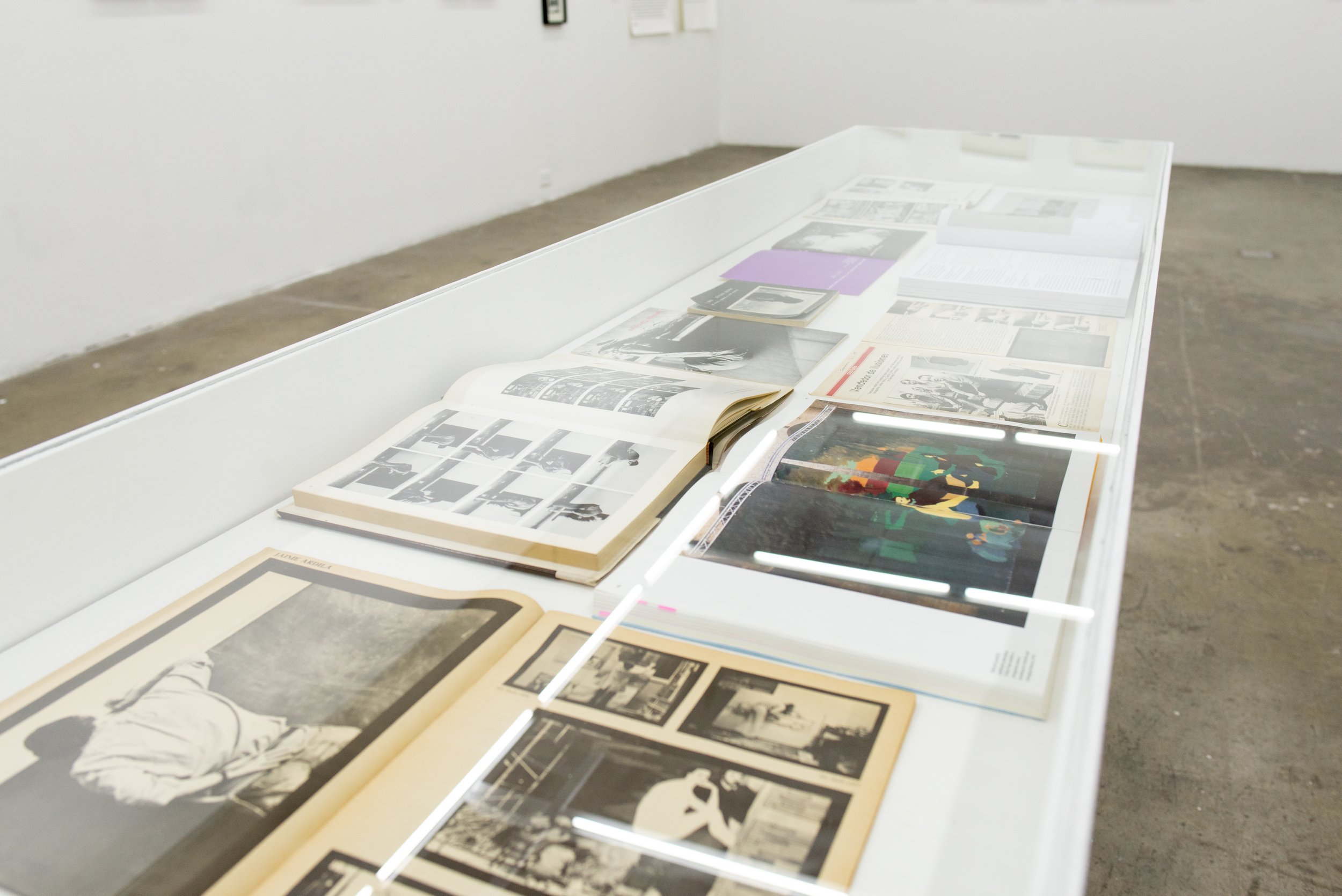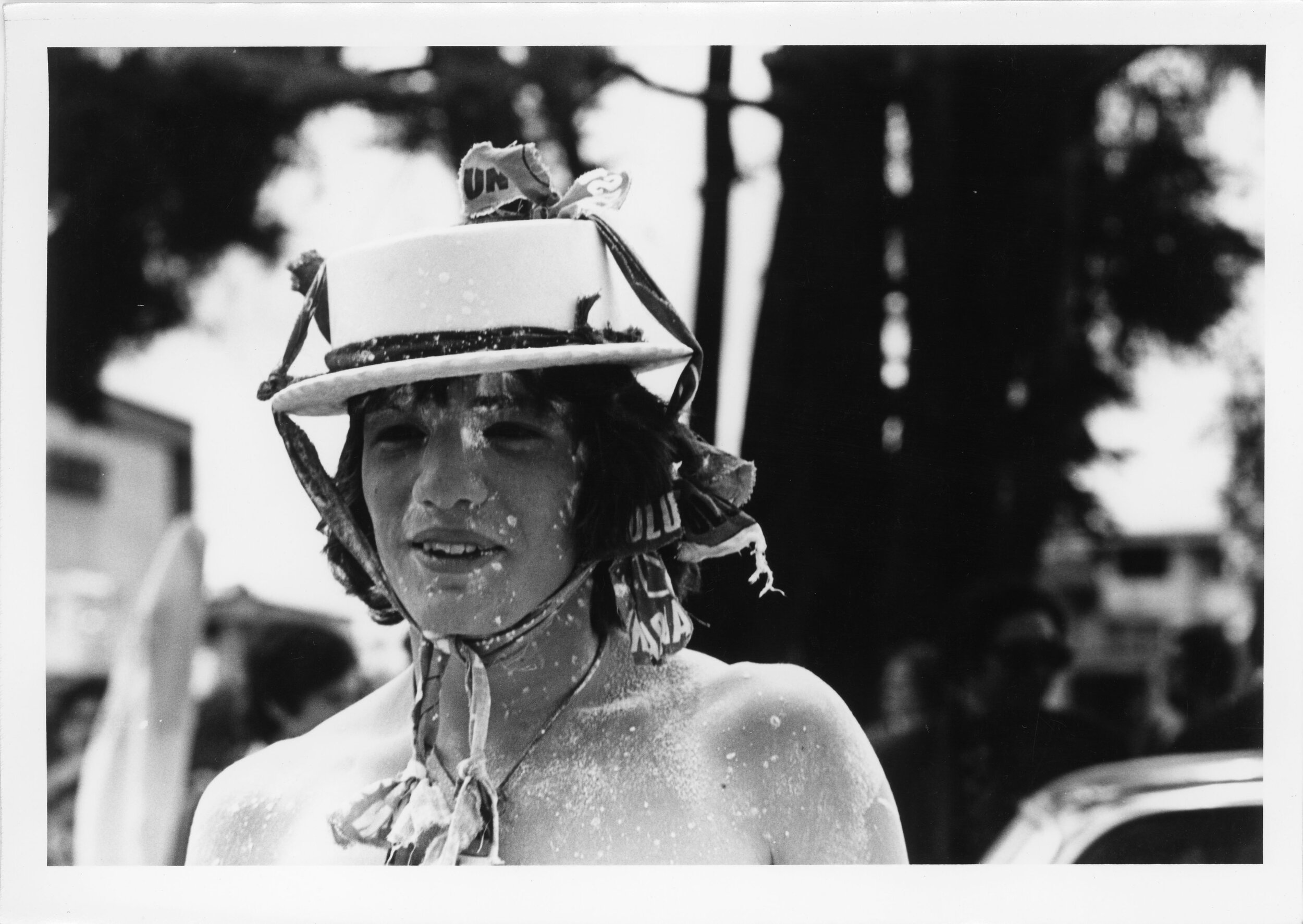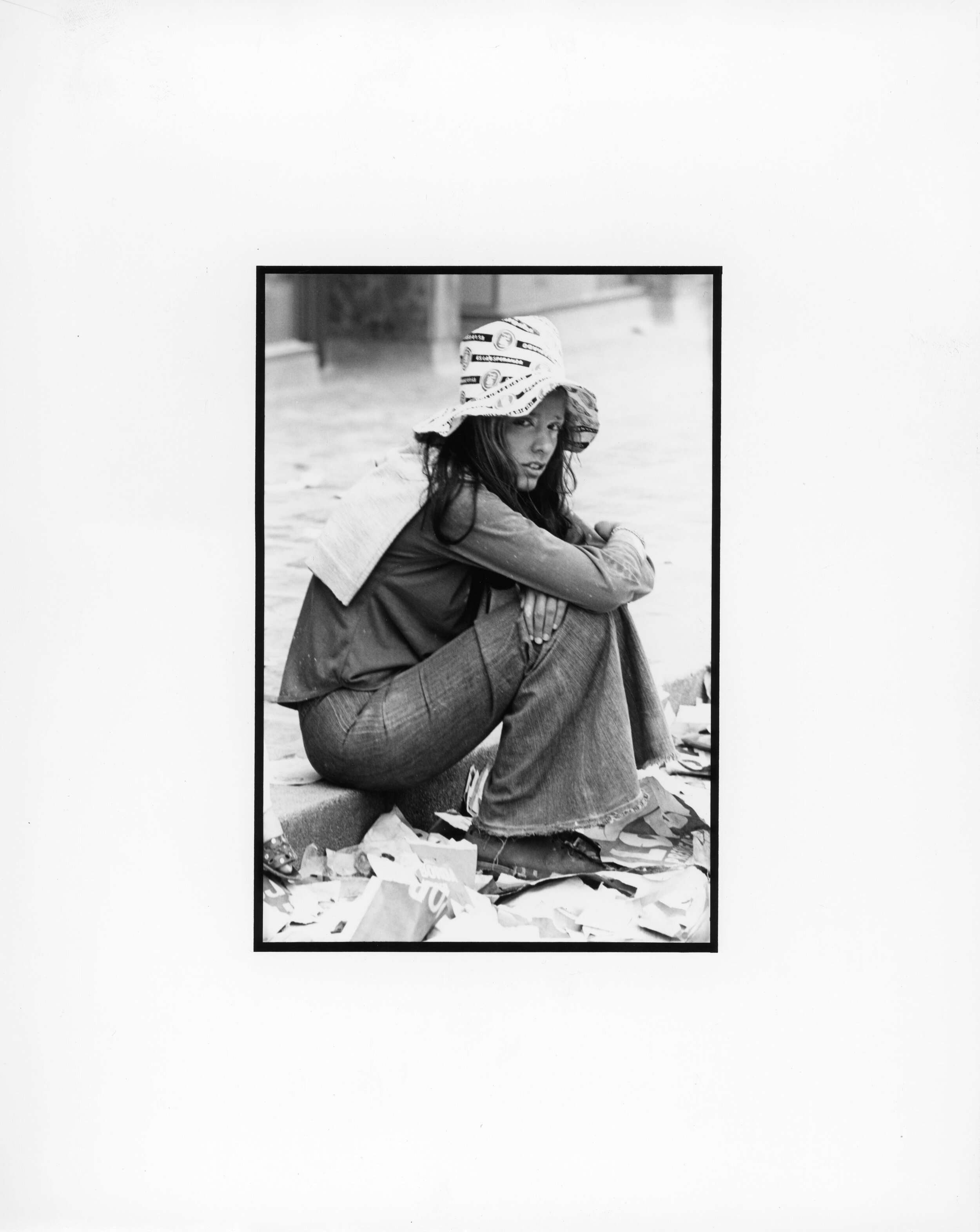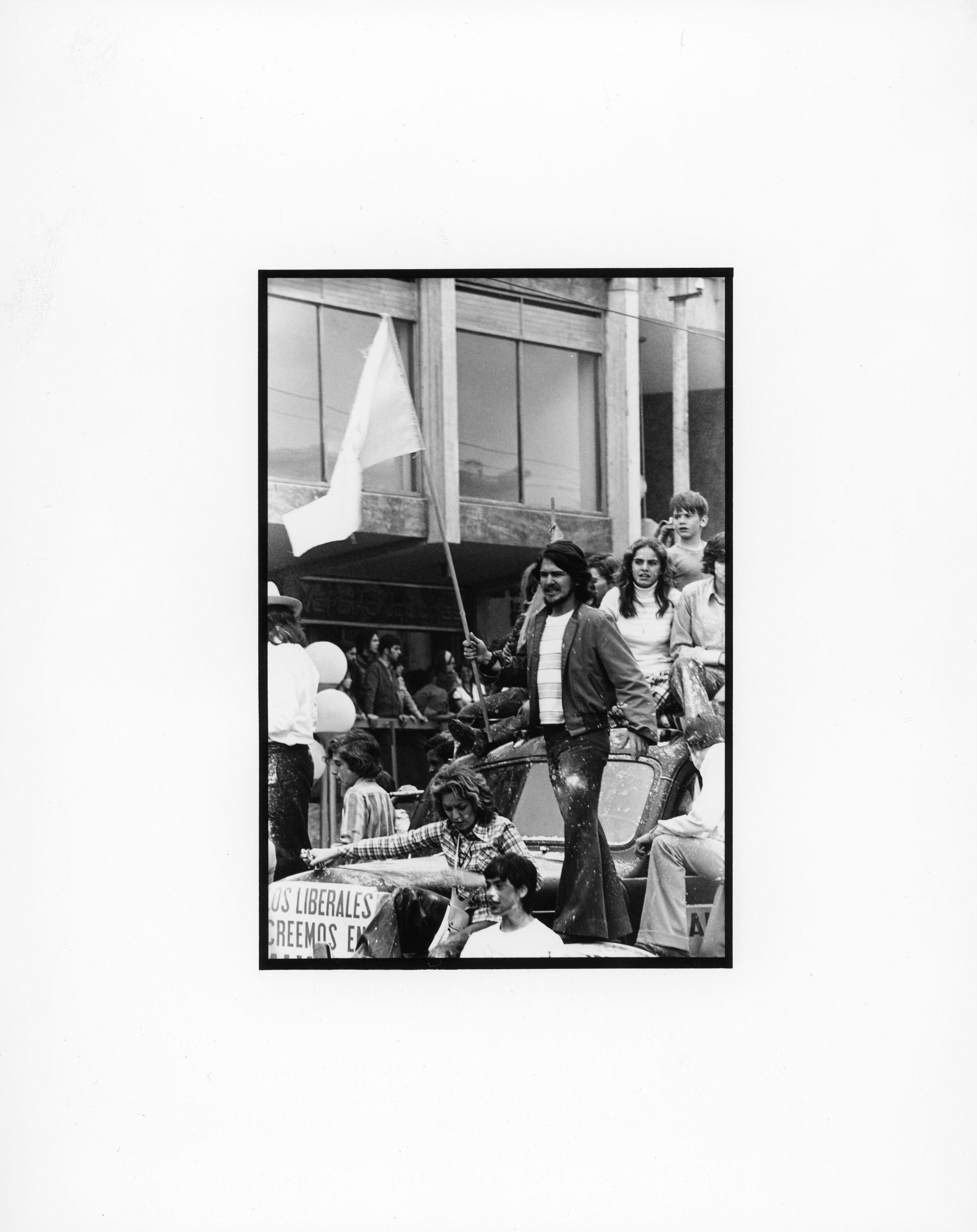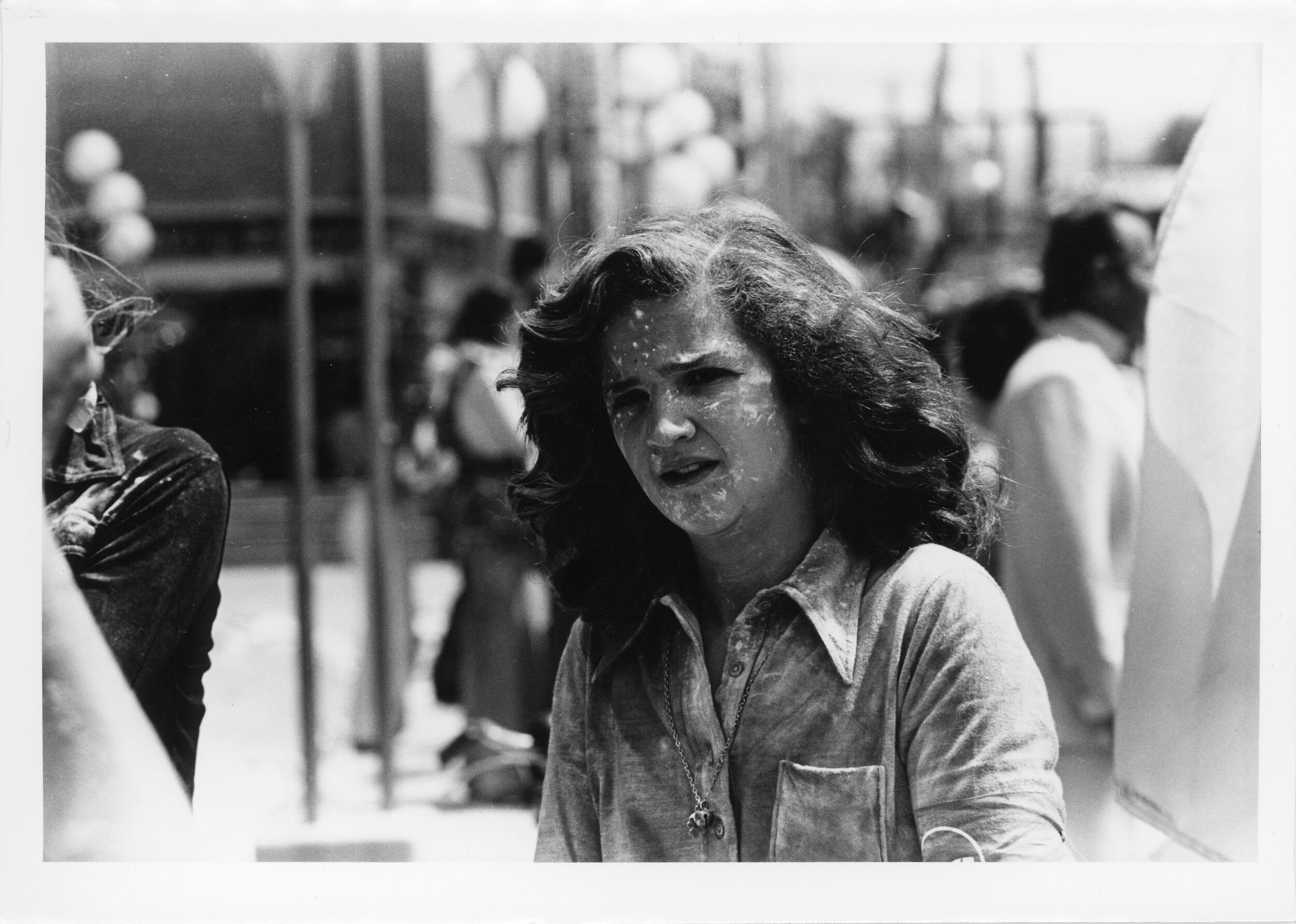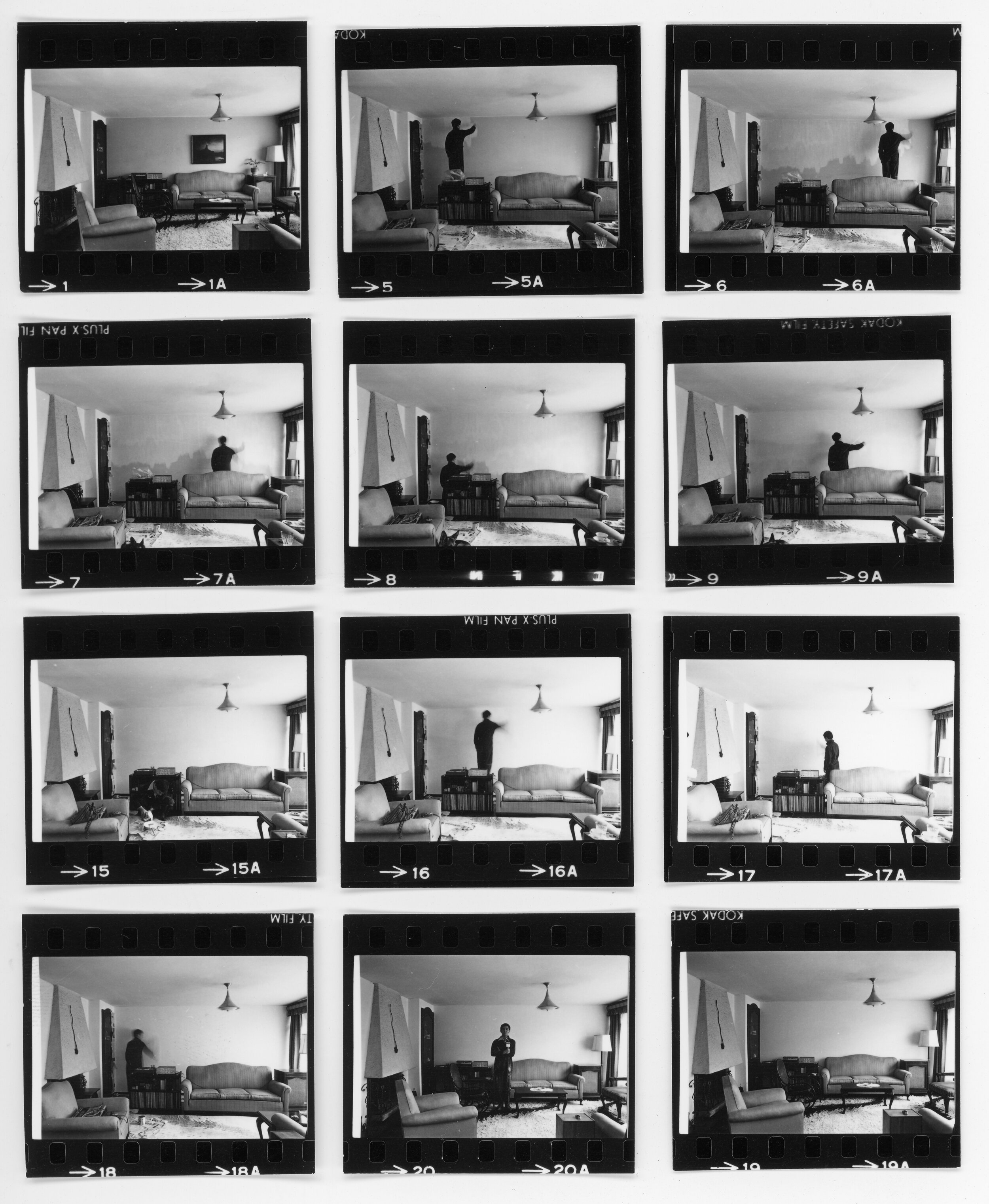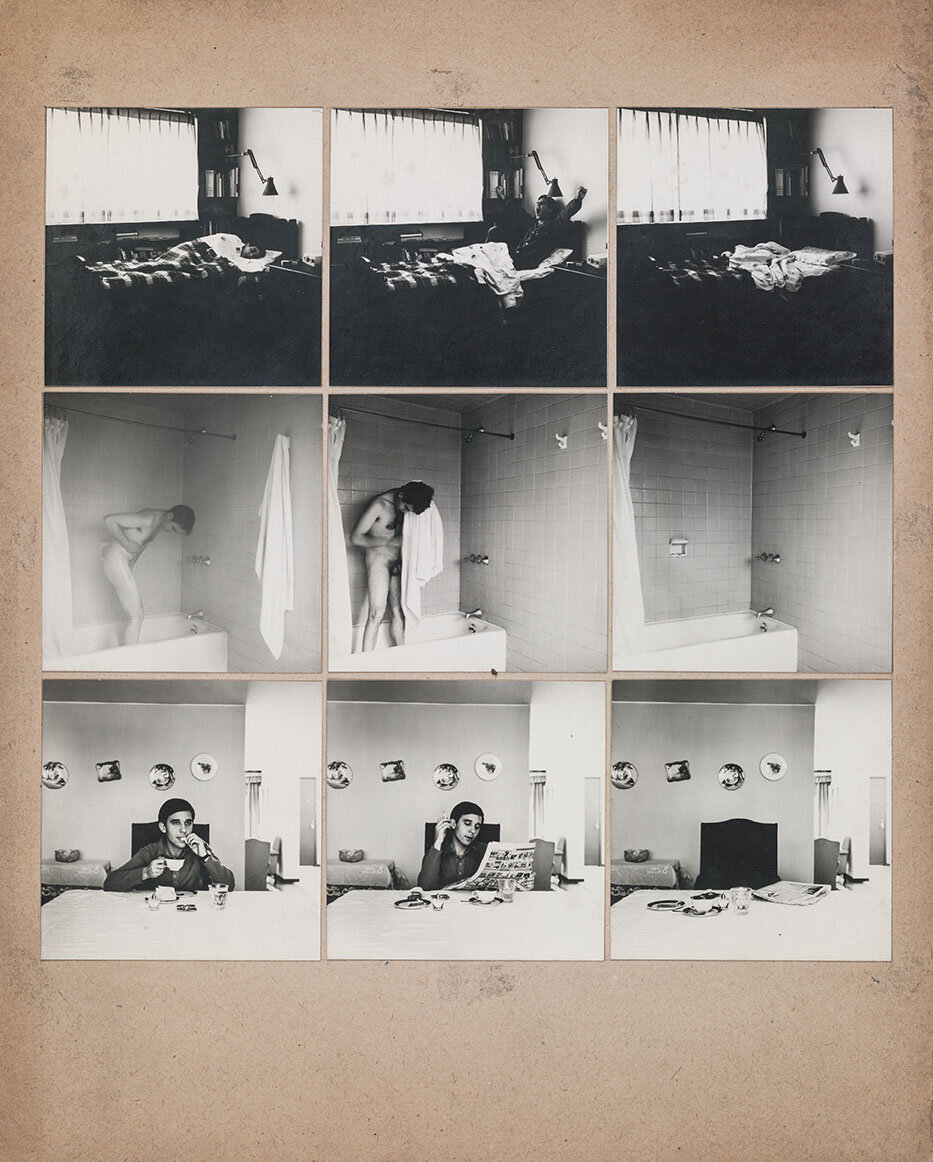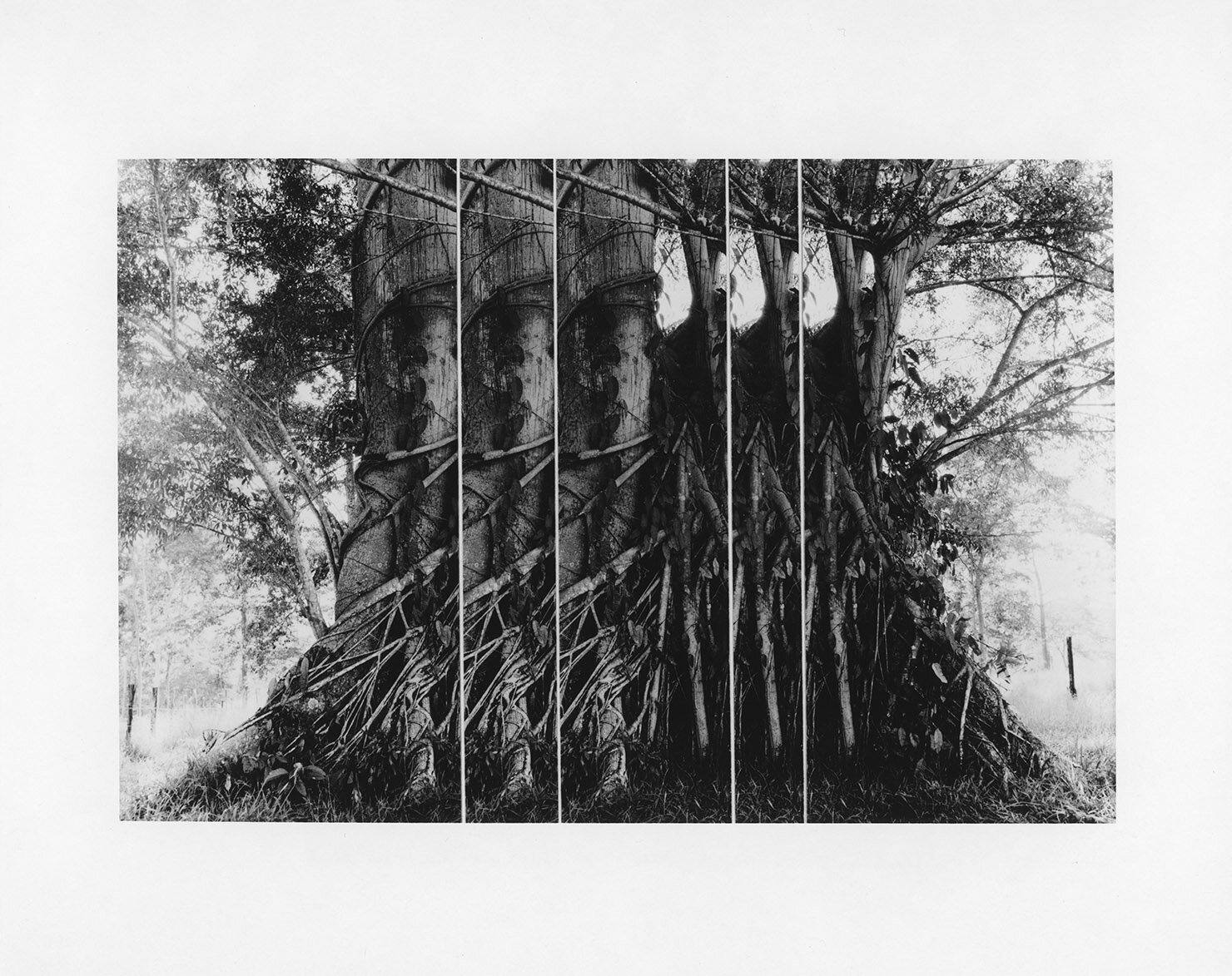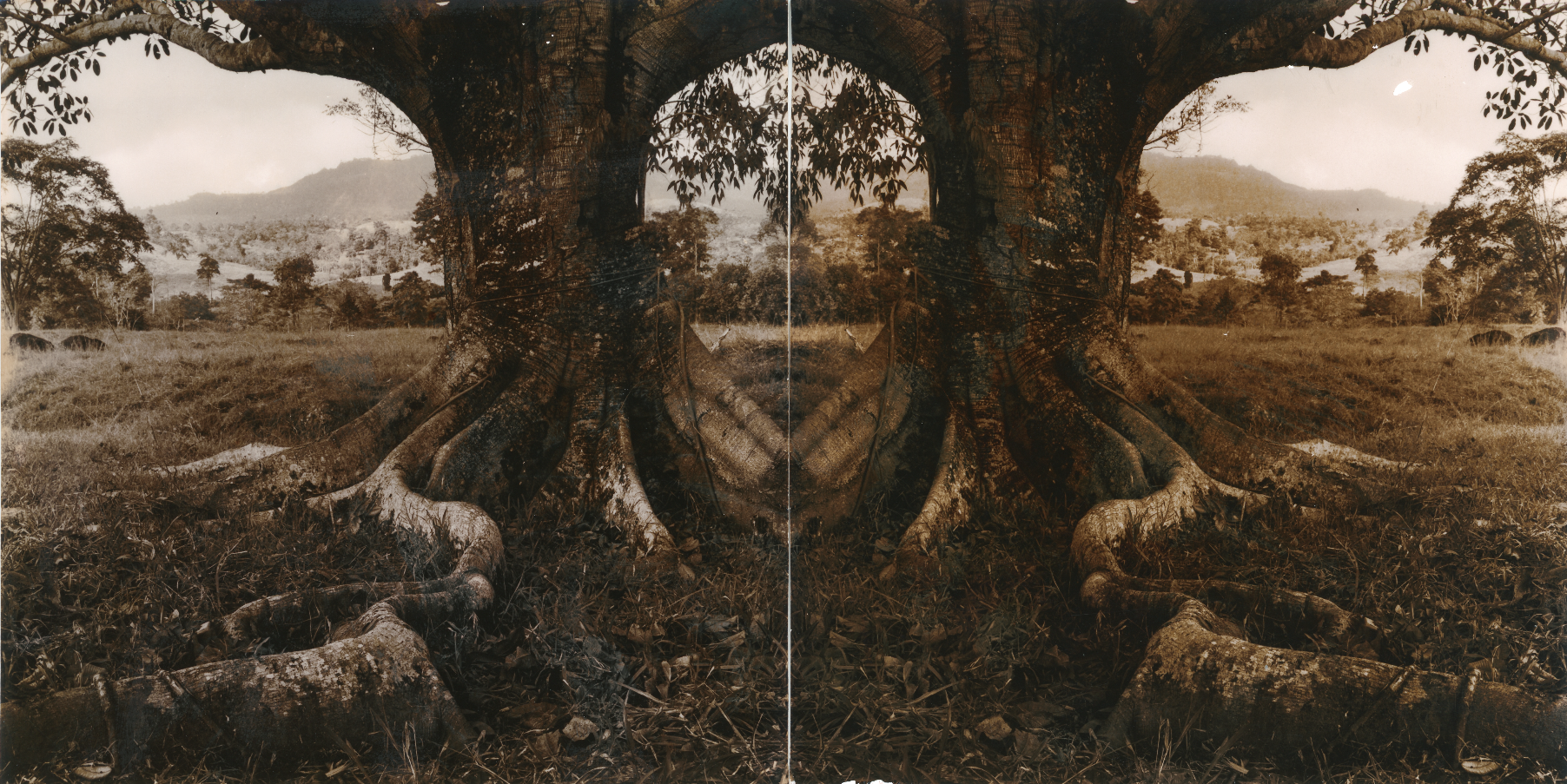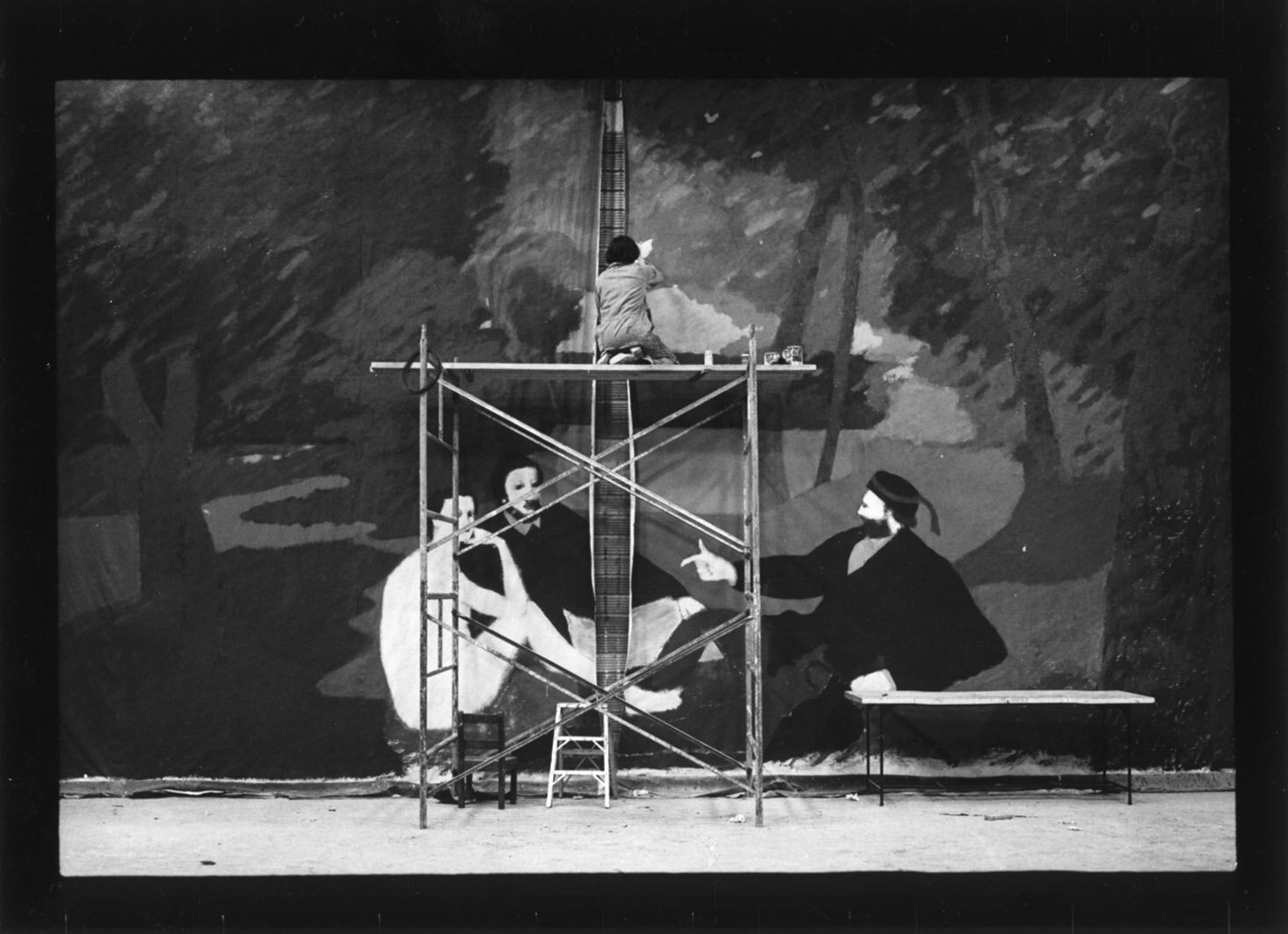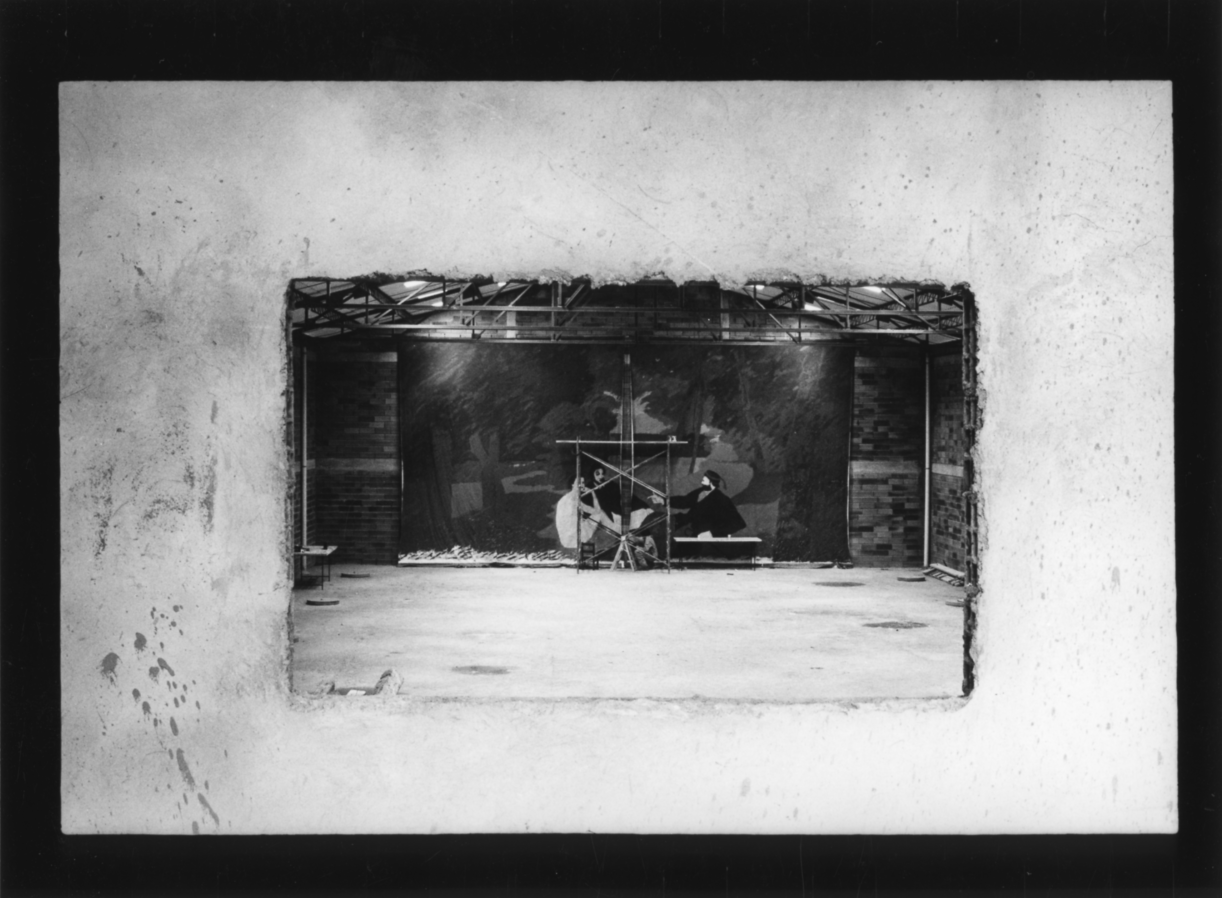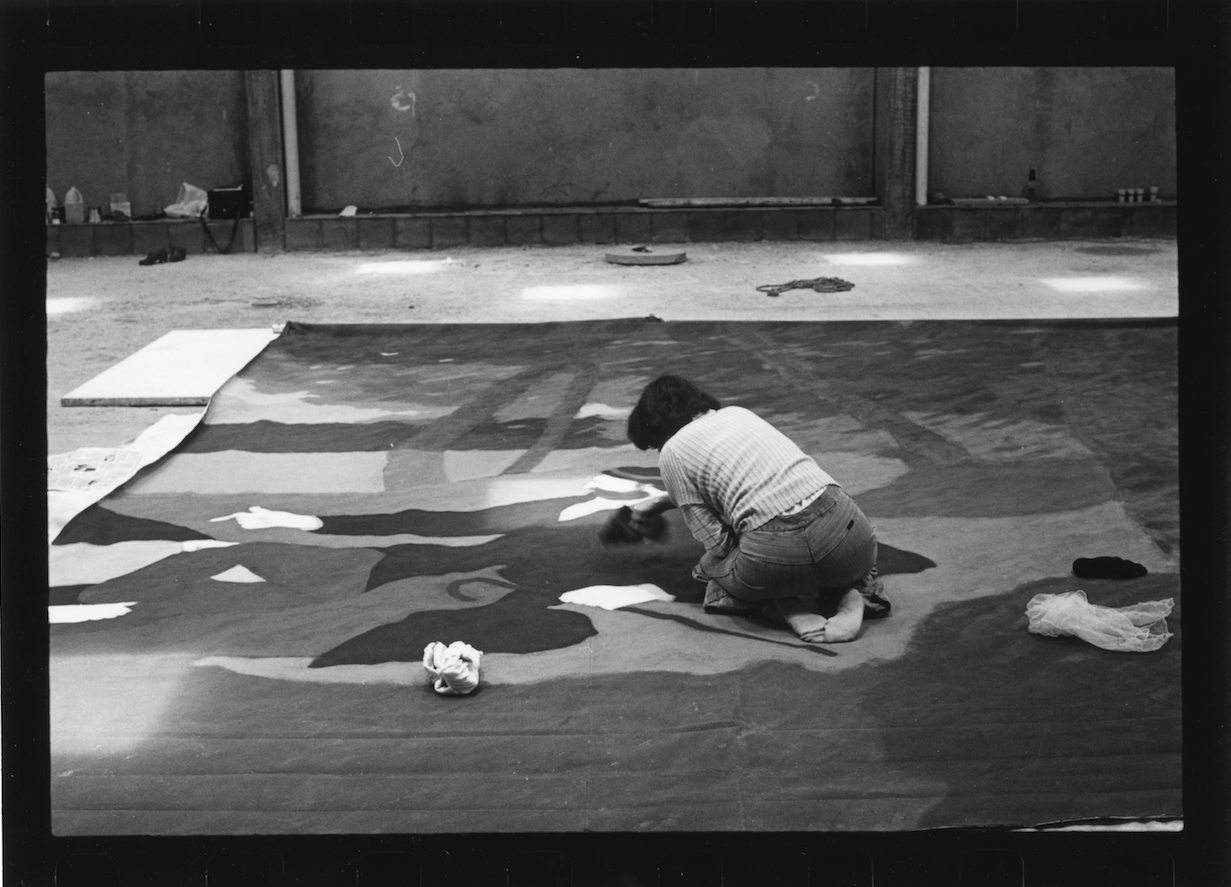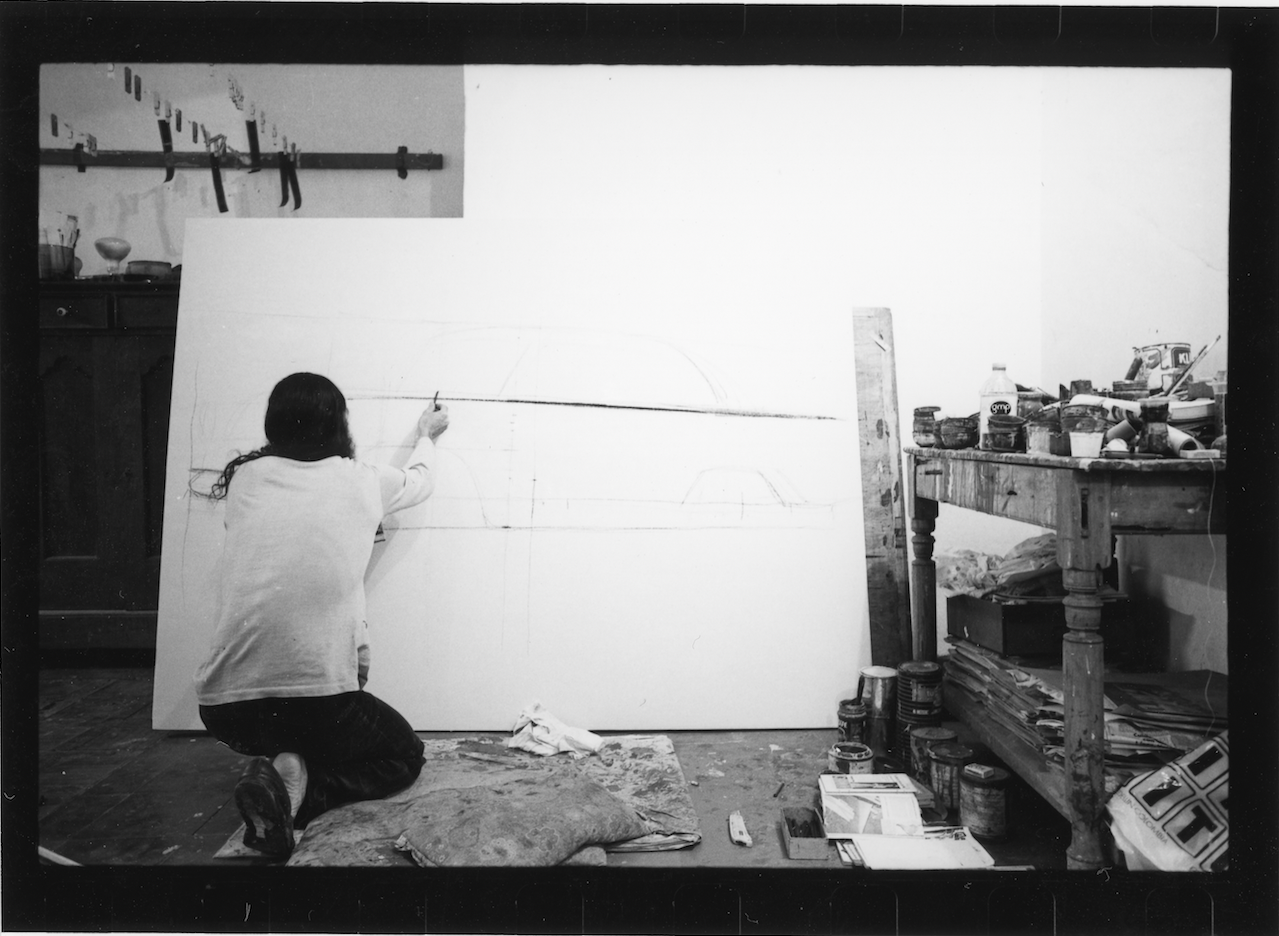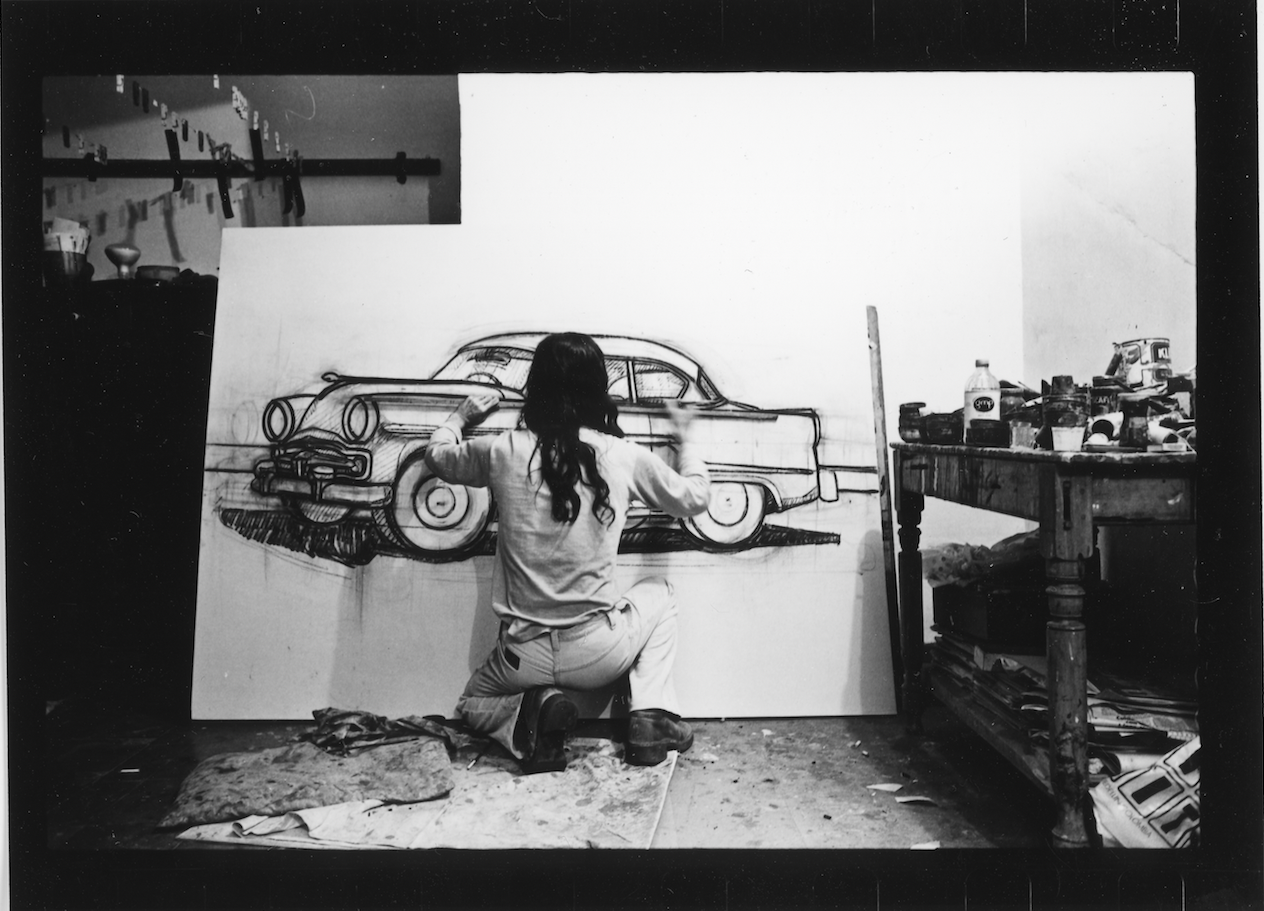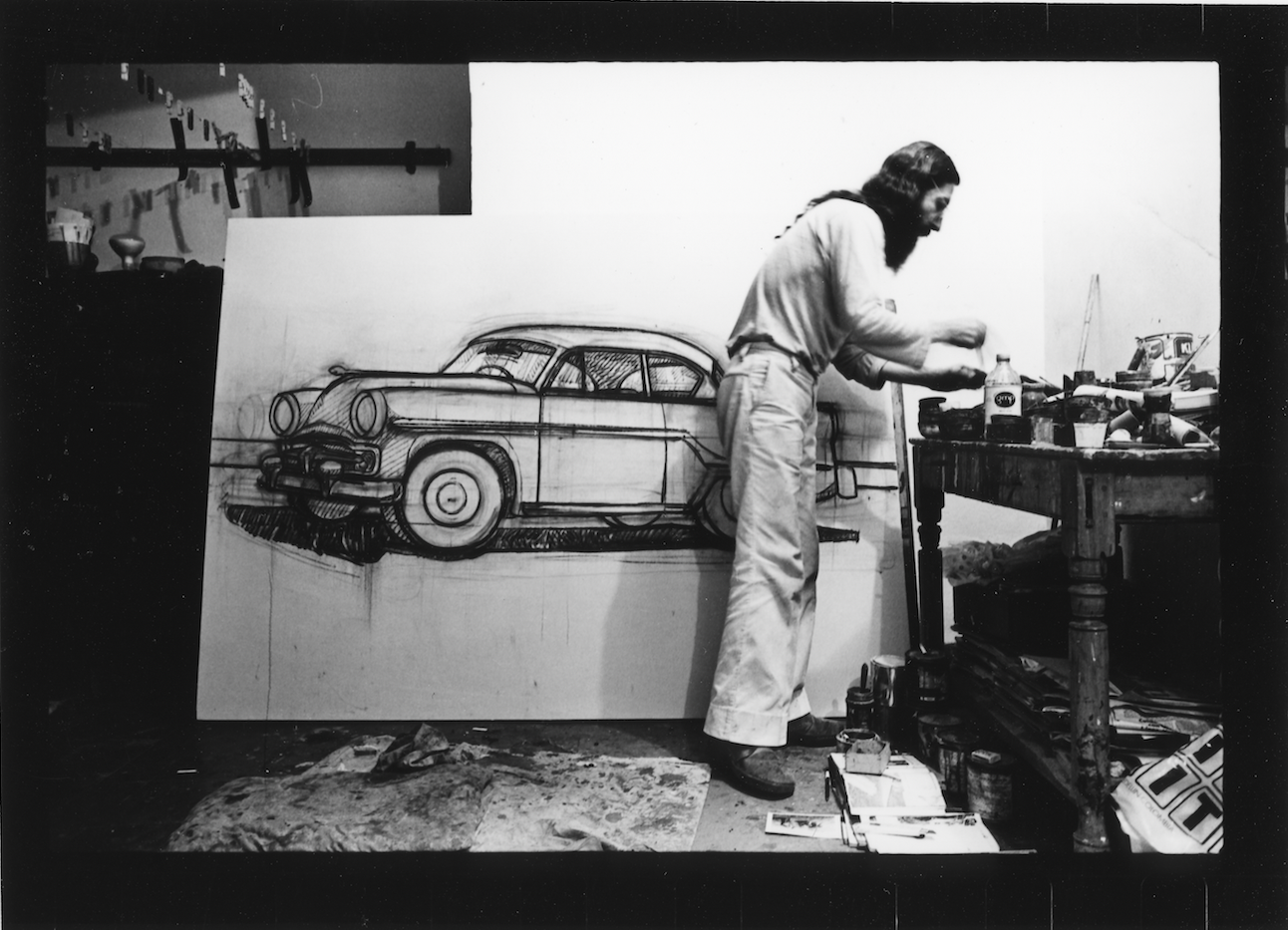Retrospectiva Jaime Ardila y Camilo Lleras
Peregrinación al campo de las estrellas. Jaime Ardila y Camilo Lleras: una retrospectiva
CURADURÍA: SANTIAGO RUEDA FAJARDO
Inauguración: 26 de octubre de 2022
Cierre: 26 de febrero de 2023
Español
Jaime Ardila y Camilo Lleras constituyen el claro ejemplo de una actitud crítica, fotográfica, original y muy contemporánea de hacer arte. Pertenecen a la misma generación de artistas que en la década del 70 utilizó la fotografía con fines conceptuales, es decir, como herramienta neutra con la cual indagar la naturaleza de la imagen, del lenguaje y la representación, cuestionando a la vez las nociones de aura y autoría. Valiéndose de contenidos autobiográficos y conscientes de estar desarrollando un trabajo a contracorriente de las nociones y valores tradicionales del arte, Álvaro Barrios, Fernell Franco, Miguel Ángel Rojas, Luis Fernando Valencia, Jorge Ortiz, Eduardo Hernández, Antonio Inginio Caro, Juan Camilo Uribe y Manolo Vellojin, junto a Ardila y Lleras, trabajaron en pro de la desmaterialización y democratización de la obra de arte, se animaron a enfrentar un medio sub valorado en Colombia - la fotografía- para crear proposiciones artísticas de naturaleza narrativa, tomando temas cotidianos para criticar y cuestionar los valores retardatarios de la sociedad colombiana, burlarse del medio del arte y sus pretensiones, explorar nuevas formas de paisaje, travestir la identidad, cuestionar la religión, la educación y examinar los medios de comunicación. Ardila y Lleras, fueron los únicos artistas que se expresaron exclusivamente a través del medio fotográfico para crear trabajos verdaderamente conceptuales.
English
Jaime Ardila and Camilo Lleras are the clear example of an art build on a very contemporary, critical, and original photographical attitude. They belong to the same generation of artists that in the 70’s used photography for conceptual purposes. That is to say as a neutral tool with which they could inquire the nature of images, language and representation, while questioning the notions of aura and authorship. Using autobiographical contents and being conscious of developing works that went against the stream of traditional notions and values of art, Álvaro Barrios, Fernell Franco, Miguel Ángel Rojas, Luis Fernando Valencia, Jorge Ortiz, Eduardo Hernández, Antonio Inginio Caro, Juan Camilo Uribe and Manolo Velloji, alongside Ardila and Lleras, worked for the de-materialization and democratization of the artwork, they were encouraged to face an undervalued technique in Colombia -photography- to create artistic propositions with a narrative nature, using day to day topics to criticize and question the retardant values of Colombian society, make fun of the art world and its pretensions, explore new forms of landscape, traverse identity, doubt religion, education and examine the media. Ardila and Lleras were the only artists that expressed themselves exclusively through photography to create true conceptual artworks.
«Creo que yo nunca fui un fotógrafo. En los años sesenta quise ser un artista pero nunca quise ser fotógrafo. Yo solo quería ser respetado en el mundo del arte» (risas).
-Camilo Lleras (2005)
Serie Asunto público: el día de las elecciones
En los años posteriores al fin del Frente Nacional, el día de las votaciones se convirtió en una fiesta impuesta donde se repartía alcohol, se compraban votos y se llenaban ciudades de publicidad impresa; se organizaban desfiles y se lanzaba harina —imitando a los carnavales de Barranquilla— convirtiendo a la manera criolla, la política en espectáculo.
En 1974, Ardila y Lleras fotografiaron el día de elecciones en Bogotá. Dos años, después, cubren las llamadas “elecciones de mitaca”. Las imágenes, todas en blanco y negro, conformaron el portafolio Asunto público, que se mostró inicialmente en la galería La Oficina en Medellín en 1978, dirigida por Alberto Sierra. Valga la pena mencionar, que aunque el portafolio pertenezca a Jaime Ardila, las fotografías fueron realizadas junto a Lleras, quien no tenía problema en ceder su autoría.
In the years posterior to the end of the Frente Nacional, the election day turned into an obligated party where alcohol was distributed, people bought votes and cities were filled with printed publicity, parades were organized and flour was thrown -imitating Barranquilla’s carnivals- becoming in the creole way, a political show.
In 1974, Ardila and Lleras photographed election day in Bogotá. Two years later, they cover the so called “elecciones mitaca”. The images, all of them in black and white, made part of the portfolio Asunto público, that was initially shown in the gallery La Oficina in Medellin in 1978, leaded by Alberto Sierra. It is worth mentioning, that although the portfolio belongs to Jaime Ardila, the photographs were made alongside Lleras, who had no issue in giving him his authorship.
Elecciones 1974
Cajas de maicena que los padres ricos del antiguo Country les daban a sus niños para que se lanzaron a la cara a manotazos llenas, porque aquí llegó el pollo y la esperanza y por fin vamos a satisfacerlos a todos, que sí que es hora de votar por López porque Álvaro es la paz; y yo veía que ya me ha llegado la hora de elegir, y saqué mi cámara y voté por Ensor, porque Marta nos había contado en clase que la entrada del Cristo en Bruselas había sido un carnaval, como el que estaba presenciando ahora en que los que elegían eran los elegidos por la paz y el derecho de poder comprar harina en cualquier supermercado y de untársela si querían. Y entonces empecé a ver doble y triple y cuádruplemente, y mis fotos se expandieron al mirarse al espejo y se convirtieron en árboles frondosos; y luego se inflaron y si convirtieron en un gordito guerrero de maicena que casi no cabía entre su misma ropa y que en el fondo parecía un Botero de verdad, porque los de mentira eran pintados.
Jaime Ardila, texto inédito
Corn starch boxes that rich parents of the old Country gave their kids to throw into their own faces with handfulls, because chicken and hope came here and we will finally satisfy them all, that if it’s time to vote for Lopez because Álvaro is peace; and I saw that it was time for me to choose, so I took out my camera and voted for Ensor, because Marta had told us in class that the entrance of Christ in Brussels had been a carnaval, like the one that we were witnessing now in which the ones who chose were the ones chosen by peace and the right to buy flour in any supermarket and smear it on if they’d wish to. And so I started seeing double, triple and quadruple, and my pictures expanded when they saw themselves in the mirror and became leafy trees. Then they blowed up and turned into a fatty maicena warrior that almost didn’t fit in their own clothes and that in the background, looked like an actual Botero, because the fake ones were painted.
Jaime Ardila, unpublished text
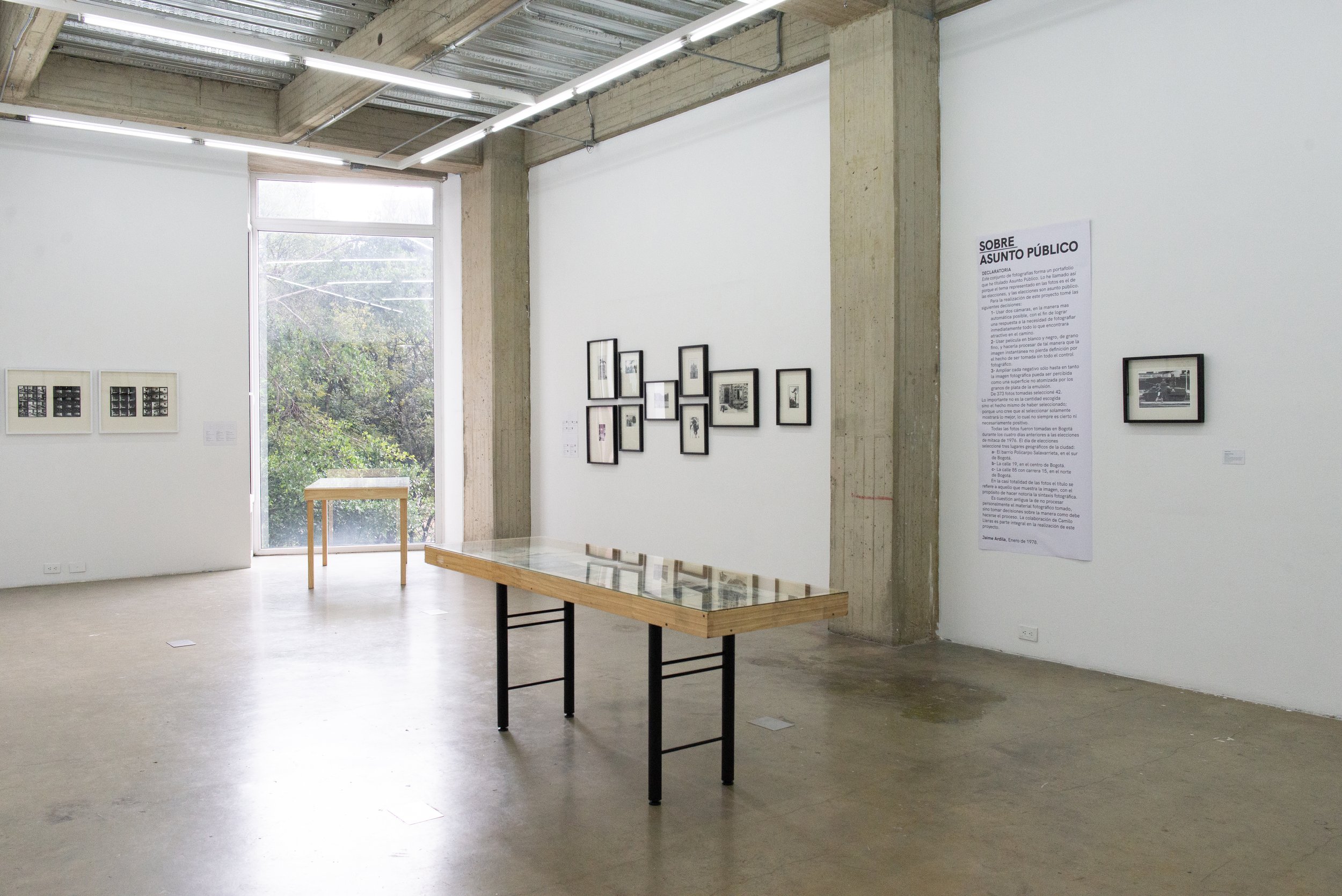
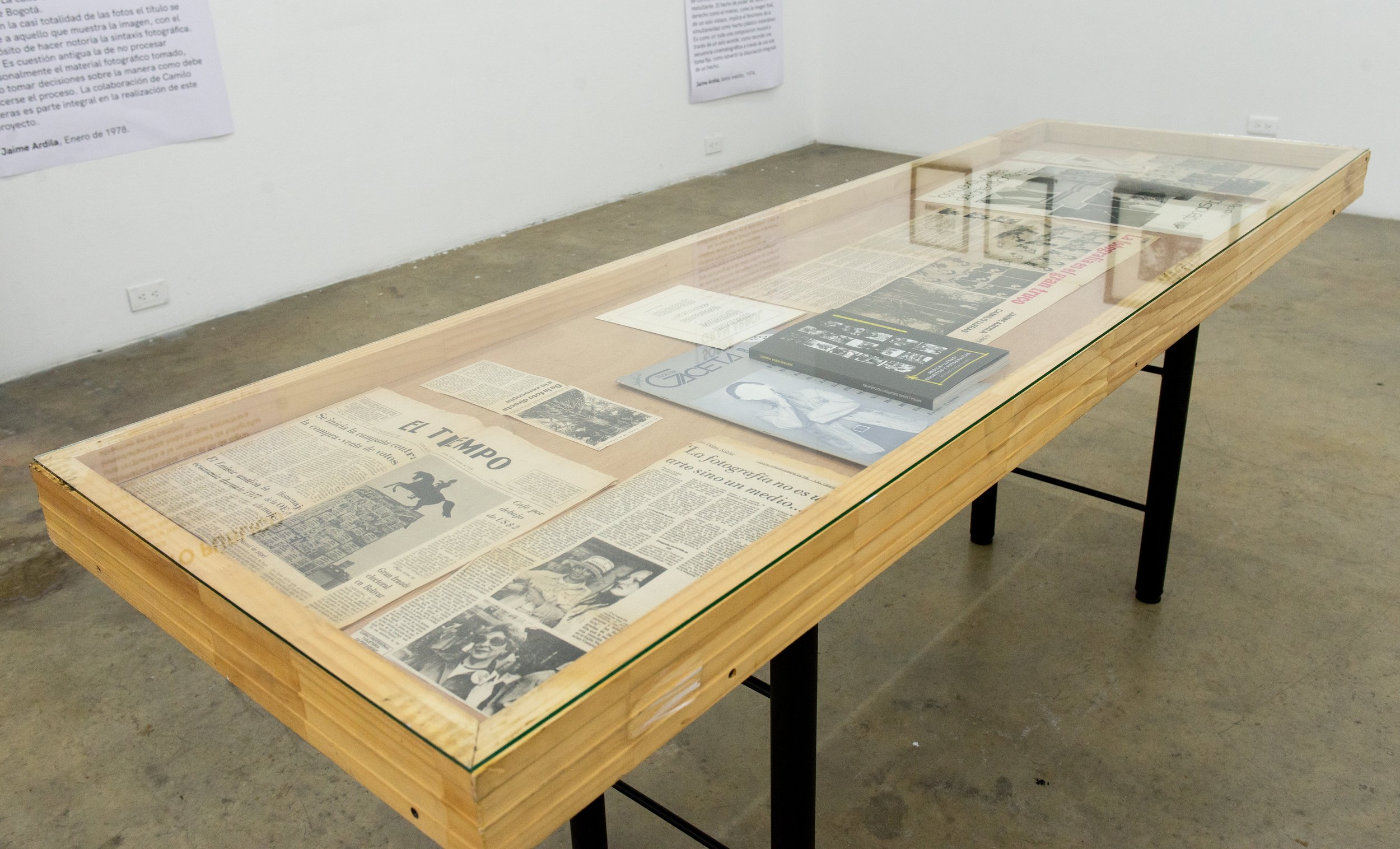


Serie Autorretratos
«I think I never was a photographer. In the seventies I wanted to be an artist, but never a photographer. I only wanted to be respected in the art world» (laughs)
-Camilo Lleras (2005)
En obras como Autorretrato disfrazado de artista, Lleras emprendió un ataque a los valores tradicionales del arte, la modernidad y la pintura. Ridiculizó las nociones de progreso, desarrollo, virtuosismo y refinamiento inherentes a la educación y al «saber» artístico. Ardila creó una de las series de paisaje más sobresalientes y poco conocidas del arte colombiano de la década de 1970 –El gran arbol-, se interesó por la representación política en Asunto público y posteriormente dejó el más completo registro existente aún sobre pintores trabajando en sus estudios. Juntos, cuestionaron la autoría al trabajar como un dúo inseparable. Reflexionando sobre su quehacer artístico hacia el final de la década de los 70, Lleras declaró:
“Quienes usamos la fotografía como medio estamos interesados en lo plural, lo serial, lo secuencial, lo vario, lo colectivo. Esto se debe a que reconocemos que el contexto en que vivimos y trabajamos es complejo. La manera de expresarlo y de comunicarnos es expansiva, propende hacia la invasión, no se deja reducir por sintetizaciones, ni se enmarca en estilos, aunque si puede conformar grupos ideológicos. Esta actitud del artista actual —para quien pintura, escultura o fotografía son medios y no fines— pone en entredicho todo lo negativo que puede haber en lo tradicional. Es posible que por ese motivo, y por el cambio que ello supone, tal actitud no sea bienvenida en nuestros museos y salones nacionales. Tampoco lo ha sido en las galerías. Entonces es apenas normal que nos cuestionemos sobre dichas instituciones, puesto que no satisfacen las necesidades del artista actual.”
In pieces such as Autorretrato disfrazado de artista (self portrait dressed up as an artist), Lleras undertook an attack on traditional art values, modernity, and painting. He ridiculed the notions of progress, development, virtuosity and refinement inherent to education and artistic “knowledge”. Ardila created one of the greatest series of landscapes, little known in Colombian art of the 70’s. -El gran árbol- (the great tree), took an interest in the political representation in Asunto público (Public matters) and then he gave us the most complete existing record present on painters working in their studios. Together, questioning authorship by working as an inseparable duo. Reflecting upon their artistic tasks towards the end of the 70’s, Lleras stated:
“Those of us that use photography as a medium are interested in the plural, serial, sequential, various, collective aspects. This is because we recognize that the timeline we are living in and working on is complex. The way to express it and to communicate it is expansive, prone to invasion, it doesn’t let itself reduce by synthesizers, nor it masks itself in styles, although it can conform ideological groups. This attitude of the current artists -for which painting, sculpture or photography are means and not ends- calls into question every negative aspect that can appear in what’s traditional. It is possible that by this motive, and because of what it supposes, said attitude is not welcome in our museums and national art salons. Neither has it been in our galleries. So it is normal to question said institutions, since they do not satisfy the needs of the current artists.”

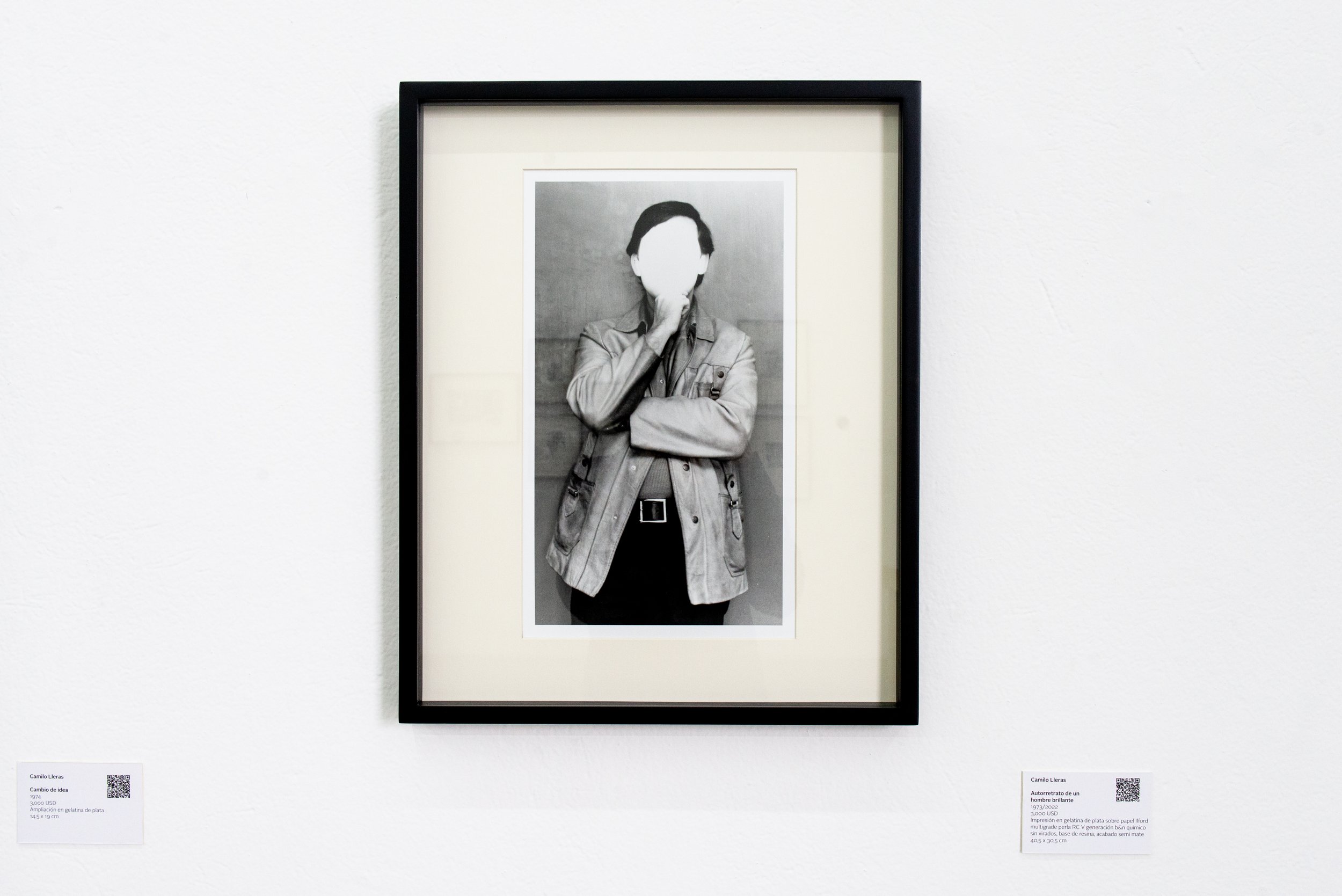
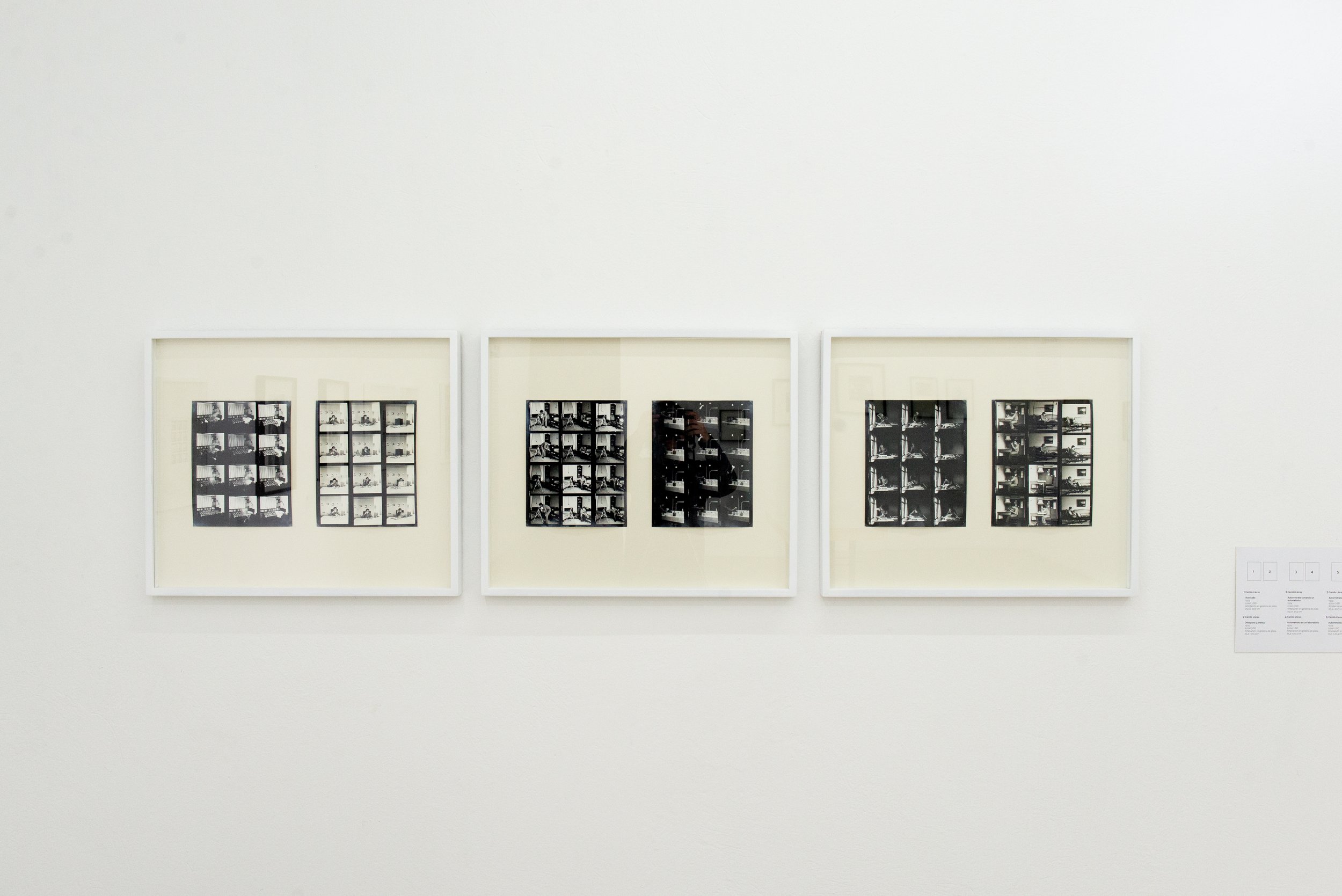

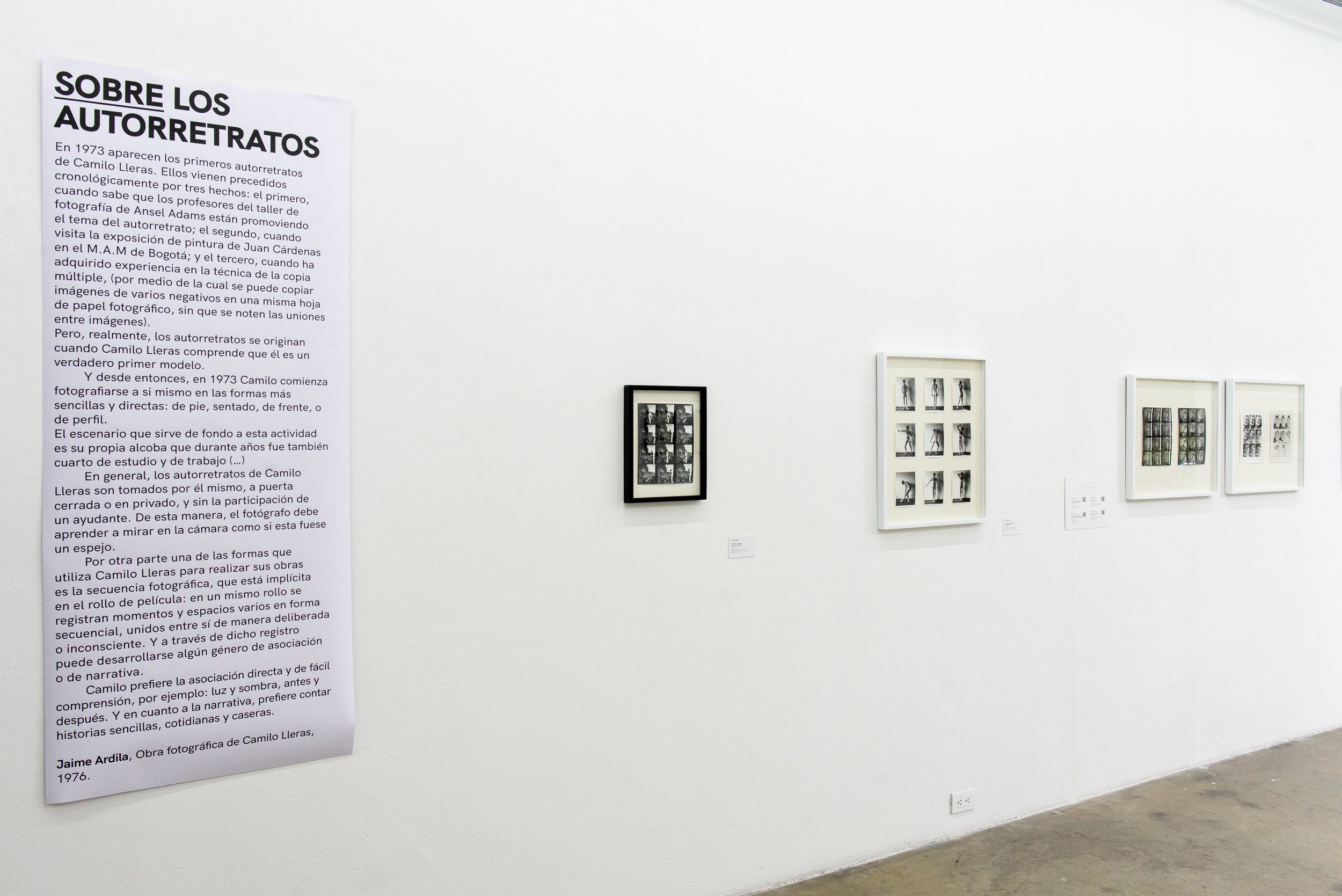
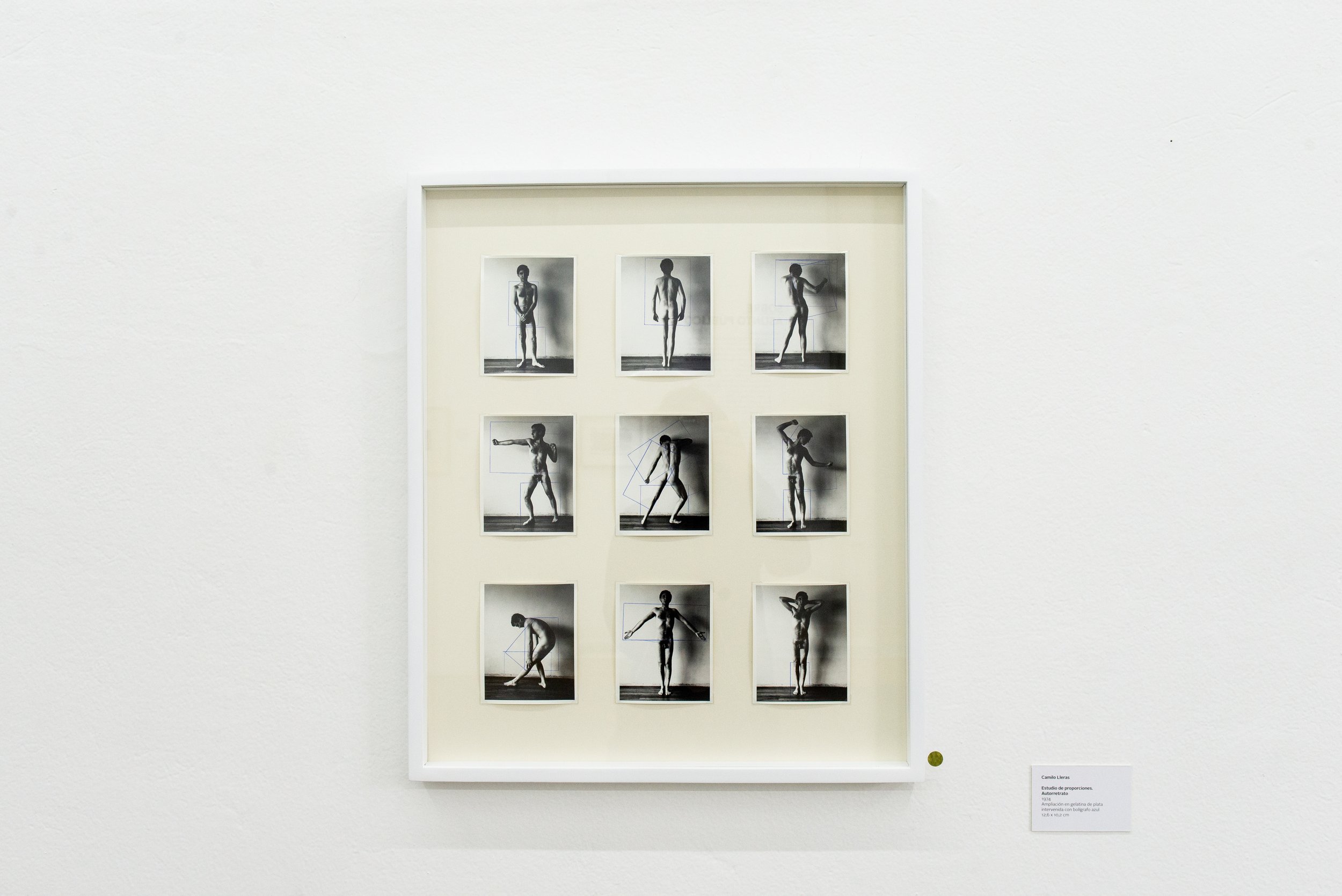
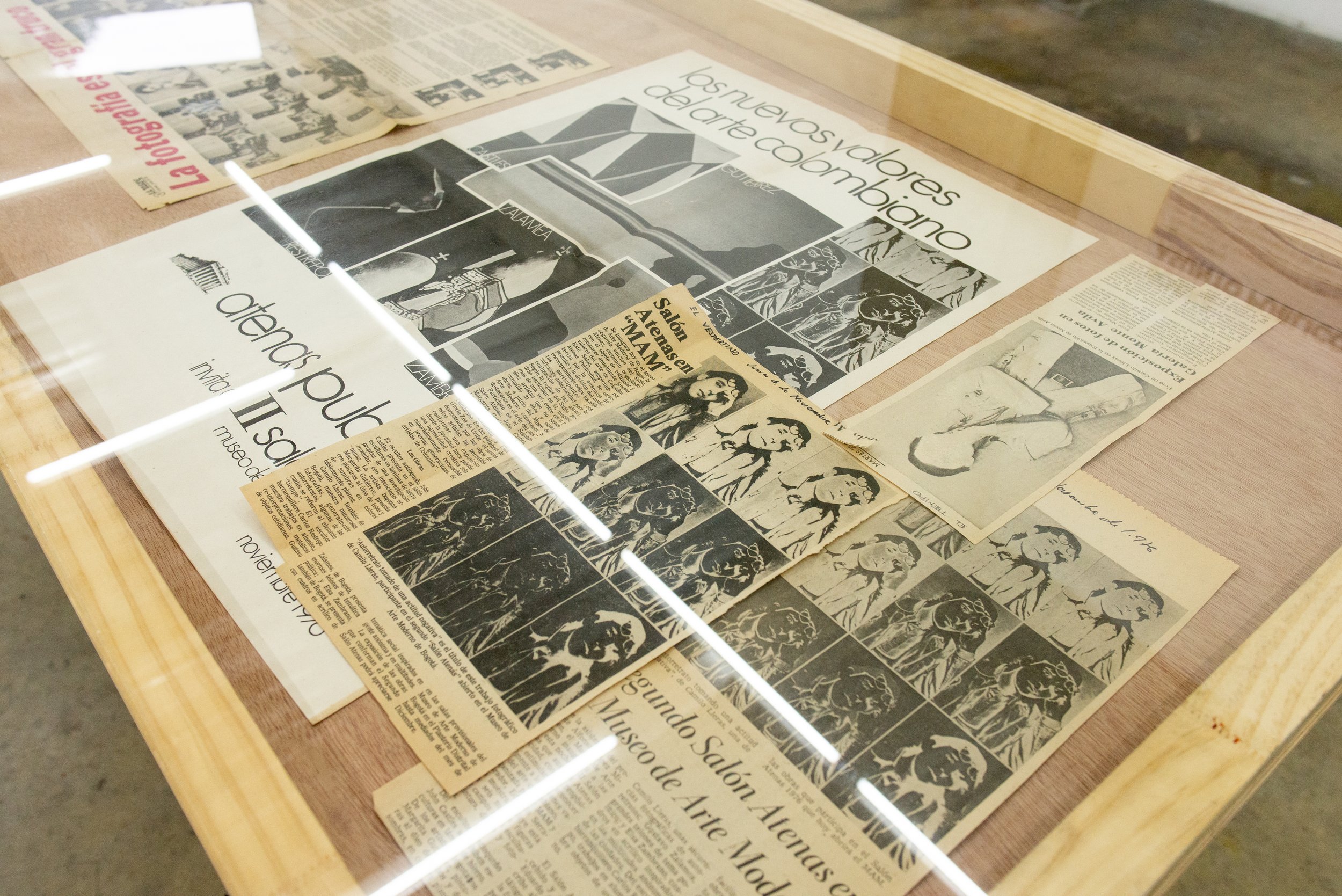
Serie El gran árbol
Jaime Ardila nació en Bucaramanga en 1942. Estudió Arquitectura en la Universidad de los Andes donde tuvo contacto con los artistas Luis Caballero y Beatriz González, alumnos de Marta Traba como él. En la universidad y en el medio del teatro, se aficionó por la fotografía de manera autodidacta y tomó cursos informales. En 1973 participó en el XXV Salón Nacional de Artistas con Paisaje tropical, parte de una serie de tomas de grandes árboles, dedicada a la multiplicación visual del tronco, ramas y bejucos de higueronas y samanes.
La serie de árboles inicia por la invitación a hacer un foto-mural de cuatro metros de longitud. Ardila decide fragmentar y multiplicar una imagen para crear un árbol completamente distinto al que estaba plantado. Al utilizar el negativo –una transparencia– podía usar el frente y el anverso de la imagen como un espejo, lo que permitía duplicación e inversión a la vez. Estas fotografías se agrupan bajo el nombre de Gran árbol y sobre ellas Ardila escribió:
Un árbol, que se mira en el espejo en que se mira el hombre, se humaniza, se vuelve culto. Con lo cual, el árbol entra en un proceso de metamorfosis: va a dejar de ser árbol, aunque su forma aparente indique lo contrario, porque entra en la espera de la pura apariencia. El árbol se desvegetaliza para humanizarse, como el hombre se deshumaniza para cosificarse, para volverse objeto; y lo hace a través del espejo, el espejo que dice la verdad y miente a la vez, que presenta una solución de una ubicuidad, (a uno y otro lado está en la misma imagen), que provoca la simultaneidad, con lo cual se acentúa lo problemático y lo ambiguo.
Jaime Ardila was born in Bucaramanga in 1942. He studied architecture in the Universidad de los Andes (Bogotá), where he was in touch with the artists Luis Caballero and Beatriz Gonzáles, that like him, were students of Marta Traba. In university and in the field of theater, he became fond of photography in a self-taught way and took informal courses. In 1973 he participated in the XXV Salón Nacional de Artistas with Paisaje tropical, part of a series of pictures of great trees, dedicated to the visual multiplication of the tree trunk, the branches and vines of figs and samans.
The series of trees started from an invitation to make a four meter long photo-mural. Ardila decided to fragment and multiply an image to create an entirely different tree than the one planted. By using film -a transparency-, he could use the front and the back of the image as a mirror, which allowed duplication and investment simultaneously. These pictures group together under the name El gran árbol (the great tree), and about them, Ardila wrote:
A tree that sees itself in the mirror where man looks at himself, turns human and becomes cult. With which the tree then enters a metamorphosis process: the tree will stop being a tree, although its inmediate shape indicates something different, because it enters to wait for the pure appearance. The tree unvegetalizes to humanize itself, as men dehumanize to materialize themselves. And he does this through the mirror. The mirror that tells the truth as it lies, that presents a solution for a ubiquity (in one side and the other there is the same image), that provoces simultanity, with which what’s problematic and ambiguious are accentuated.
En la década de 1980 —y luego de algunas investigaciones sobre la historia del arte y la fotografía—, decidieron retirarse del campo artístico y dedicarse a la astrología y el tarot. Su obra conjunta se desarrolló en el corto periodo comprendido entre 1971 y 1980, y constituye hoy, al ser re descubierta, una de las más inteligentes y agudas de la fotografía colombiana de ese periodo.
Este primera retrospectiva de su trabajo cubre las diversas series de ambos, re descubiertas en los últimos años en libros como La fotografía en Colombia en los años 70, Autorretrato disfrazado de artista y Ardila-Lleras: Escritos y fotografías, e incluye obras inéditas que en esta exposición se enseñan por primera vez.
In the decade of 1980 -and after some investigations about art history and photography-, They decided to retire from the artistic field and dedicate to astrology and tarot. Their work together was produced in the short period between 1971 and 1980, and it constitutes today, after being rediscovered, one of the most intelligent and acute Colombian photography projects of this time period.
This first retrospective of their artwork covers the diverse series of both of them, rediscovered in the last years in books such as La fotografía en Colombia en los años 70, Autorretrato disfrazado de artista, and Ardila-Lleras: Escritos y fotografías, and includes unpublished artworks shown for the first time in this exposition.
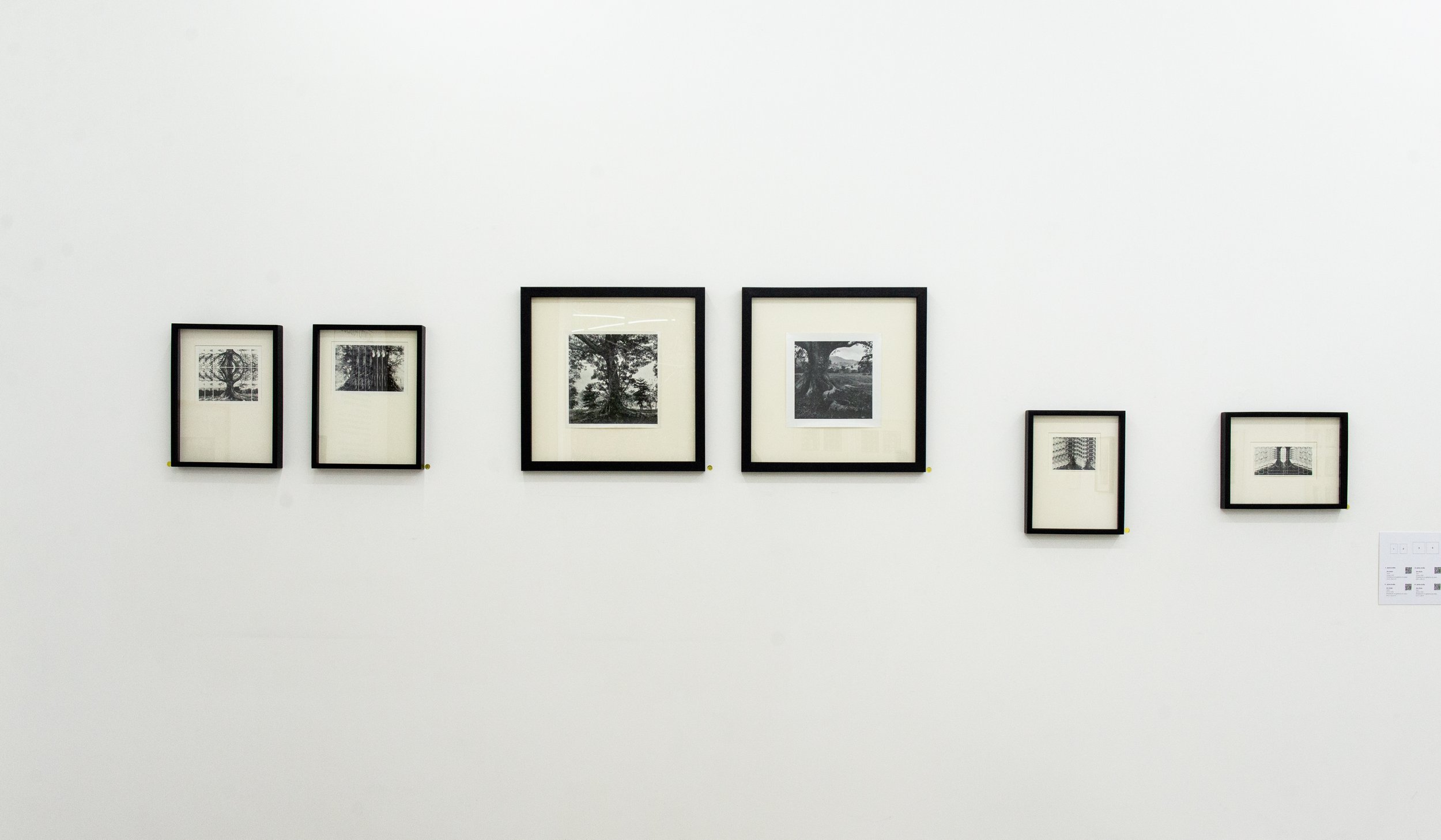
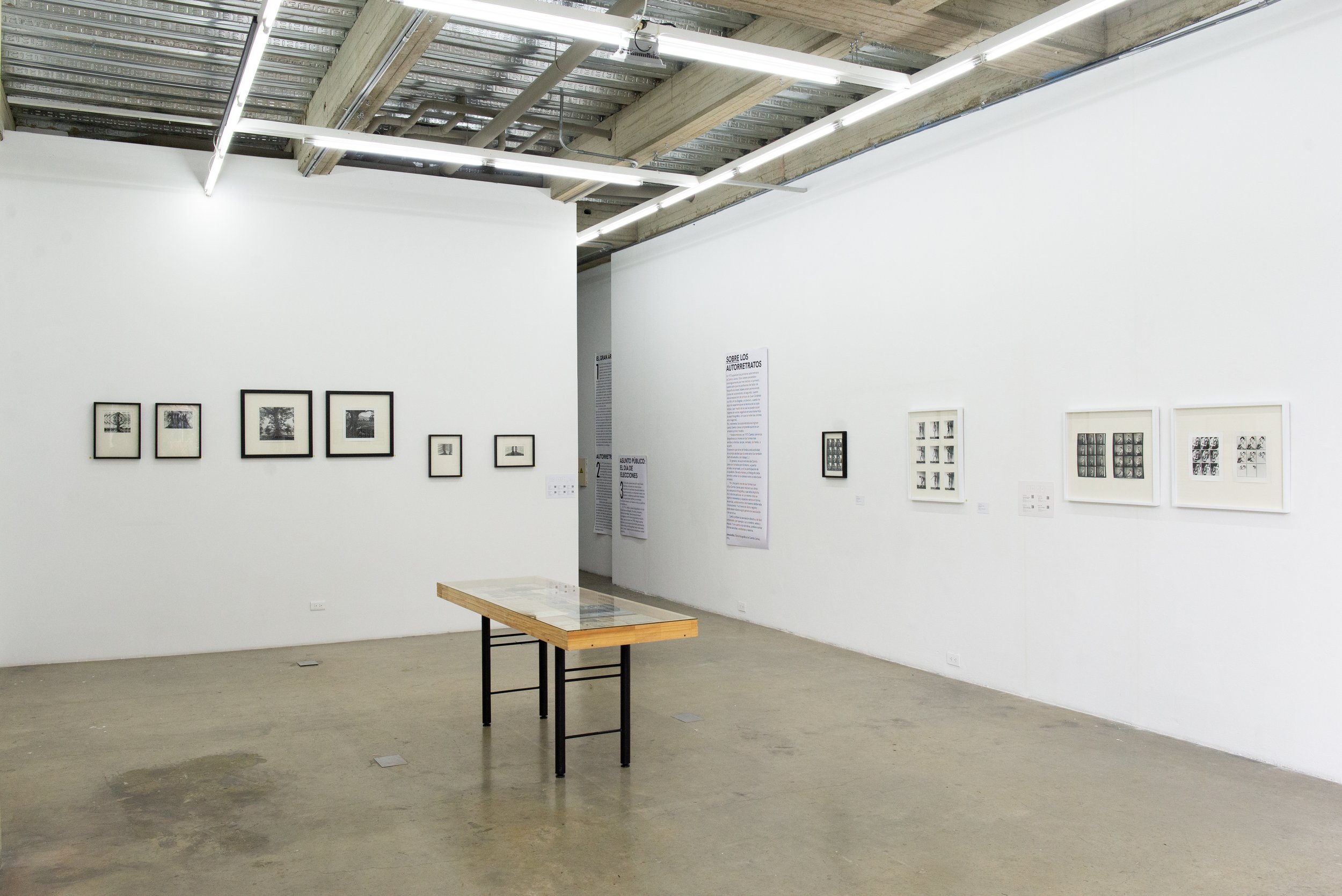
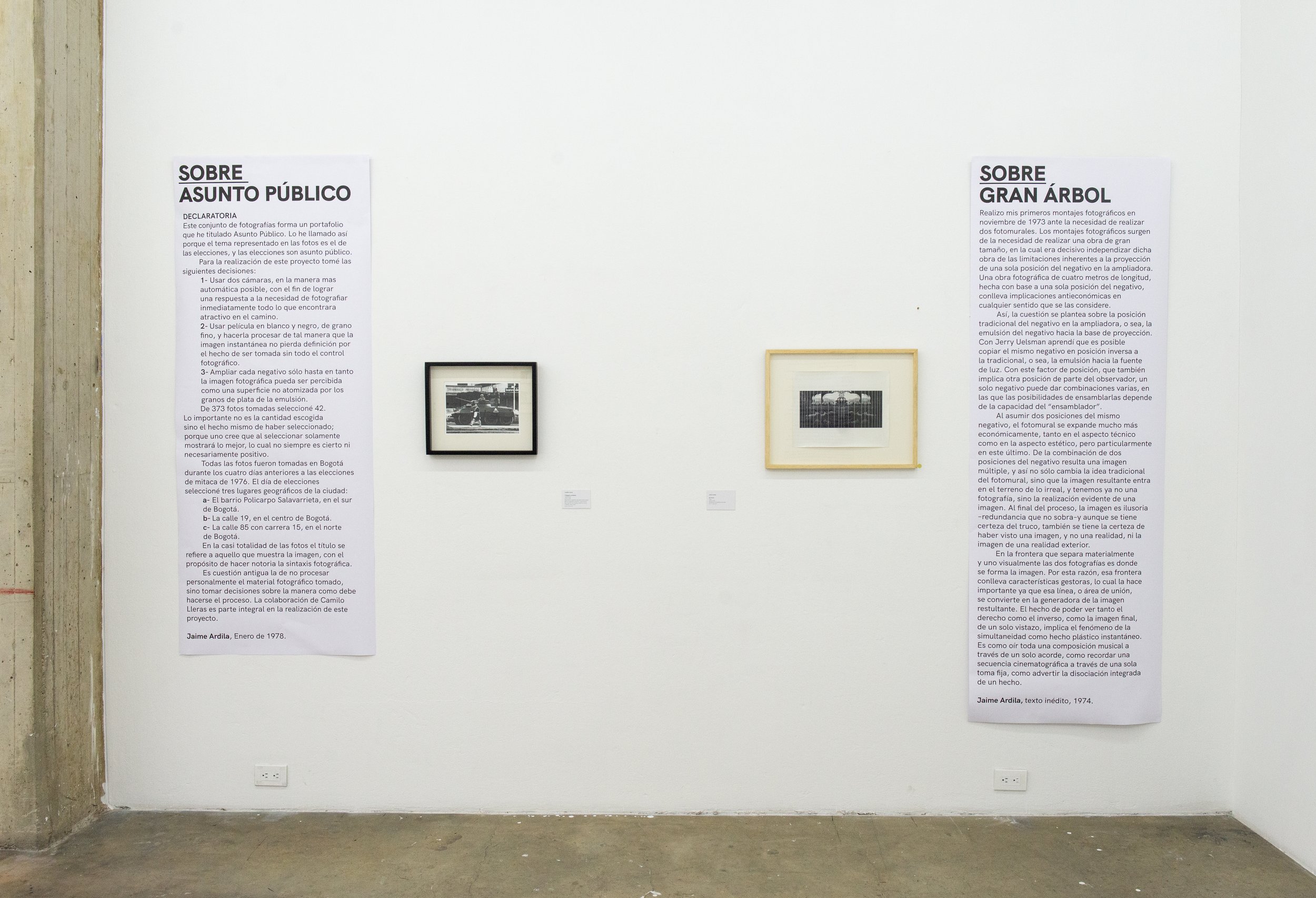
Serie: Pintores pintando
Sin título
Santiago Cárdenas en su estudio
Fotografía análoga blanco y negro 6 x 23 cm c/u
“Un día Camilo descubrió un libro de Lord Snowdon en que había fotografiado prácticamente a todos los artistas ingleses vivos en ese momento, y a ambos nos pareció que esa era una buena idea. En Colombia había muchos artistas que venían desarrollando una labor y pensamos que el conjunto de ellos podría conformar algo interesante.”
-Jaime Ardila
Para noviembre de 1976 Ardila fotografía a Juan Cárdenas que trabajaba en un garaje improvisado como estudio. Según Ardila: “Las fotos que tomé corresponden a una especie de proceso de ajuste entre pintor y fotógrafo”. Para ese entonces buscaba que cada disparo, que cada negativo fuese una obra total y autónoma, lo que permitió le llegar a realizar algunos retratos muy bien logrados del pintor:
“One day Camilo found a book about Lord Snowdon in which he had photographed basically every English artists alive at the time, and we both thought it was a good idea. In Colombia there were many artists that were coming up with works and we thought that the pictures of them combined could conform something interesting.”
-Jaime Ardila
For November of 1976, Ardila photographed Juan Cárdenas, who worked in a garage he used as an improvised studio. According to Ardila: “The pictures I took correspond to a type of process of adjustment between the painter and the photographer.” Up to that moment he sought for each capture, each film to be a complete and autonomous artwork, which allowed him to achieve some great portraits of the painter:
“En vista de los problemas que venían apareciendo, y considerando que como fotógrafo yo no le quitaba los ojos de encima a mi modelo, ensayé fotografiar indirectamente a Juan Cárdenas: a través de un espejo ovalado que estaba puesto en un caballete del estudio. Me resulta más propicio buscarlo a través del espejo, que enfocando directamente al pintor. Recordé las clases de historia del arte de Marta Traba, y de su explicación de "las Meninas" de Velázquez, cuando tomé la foto en que aparece Juan cuatro veces: dos en forma de pintura, un reflejo en el espejo, y una vista por detrás.” [1]
[1] Ardila, Jaime. Texto sobre Juan Cárdenas, inédito.
Textos y curaduría por Santiago Rueda
“Due to the problems that kept appearing, and considering that as a photographer I couldn’t take my eyes off my model, I tried photographing Juan Cárdenas indirectly: through an oval mirror I had set in an easel in the studio. It resulted more auspicious for me to search him through the mirror, focusing the painter directly. I remembered Marta Traba’s art history lessons, and her explication for “Las Meninas” by Velázquez when I took the picture in which Juan appears four times: two in the form of painting, one reflected on the mirror, and one painted from behind.” [1]
[1] Ardila, Jaime. Text about Juan Cárdenas, unpublished.
Texts and curatorship by Santiago Rueda
